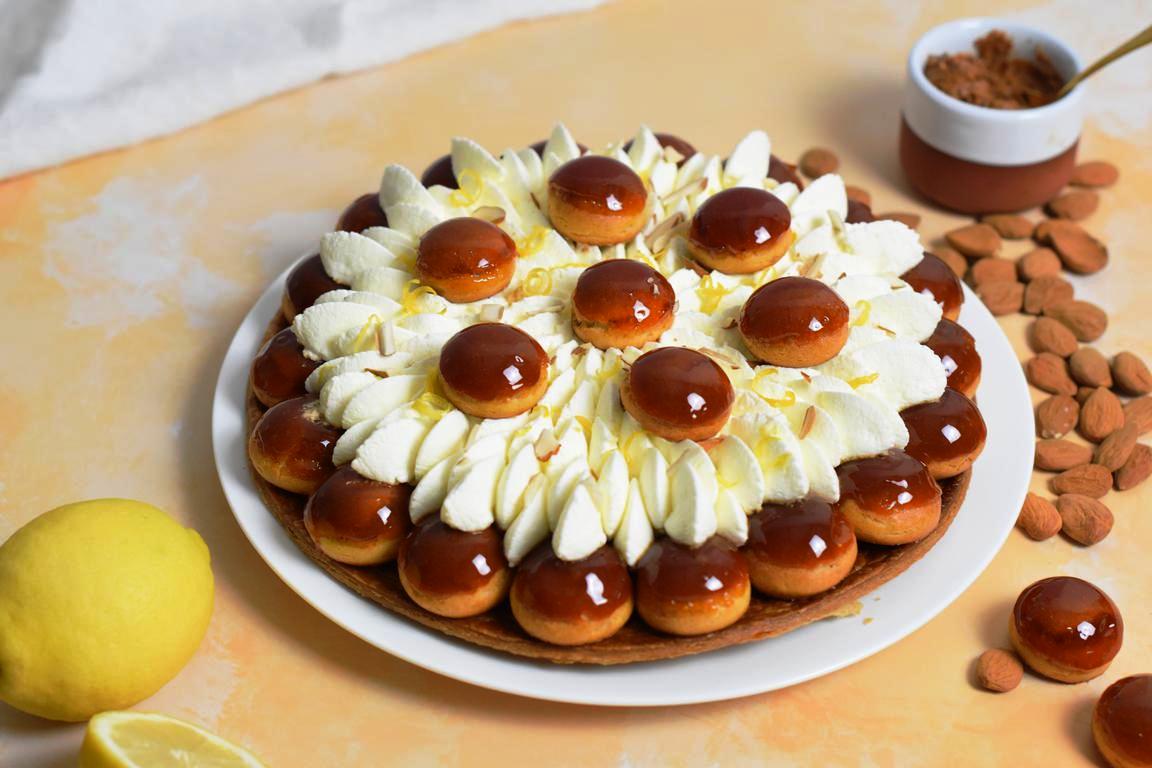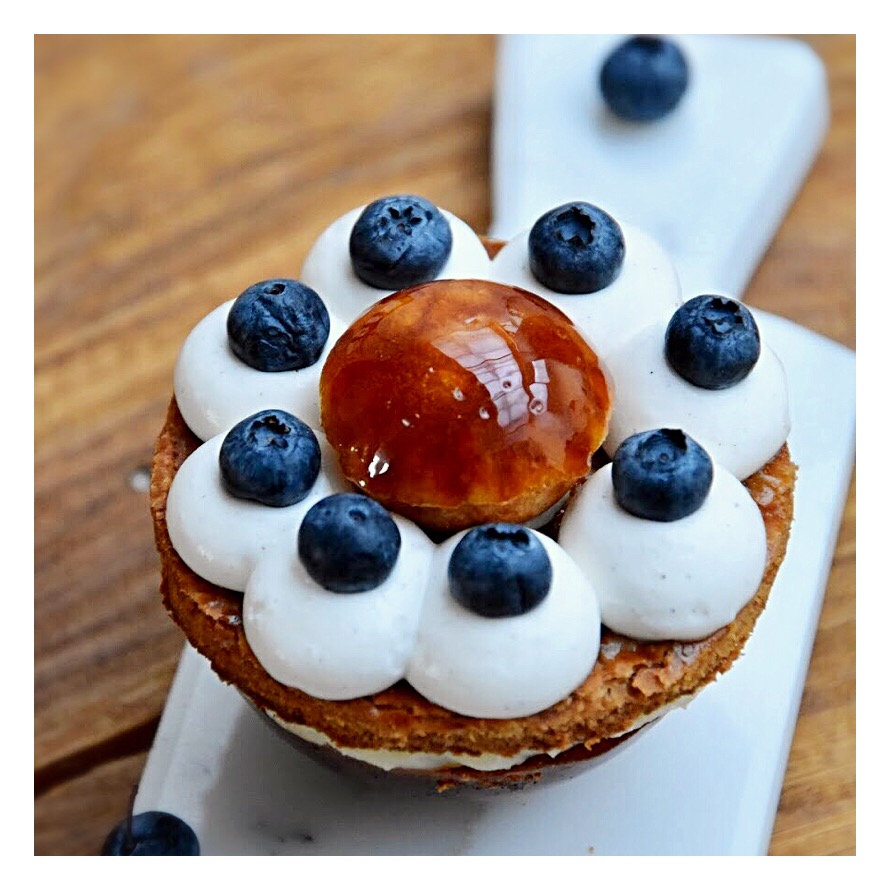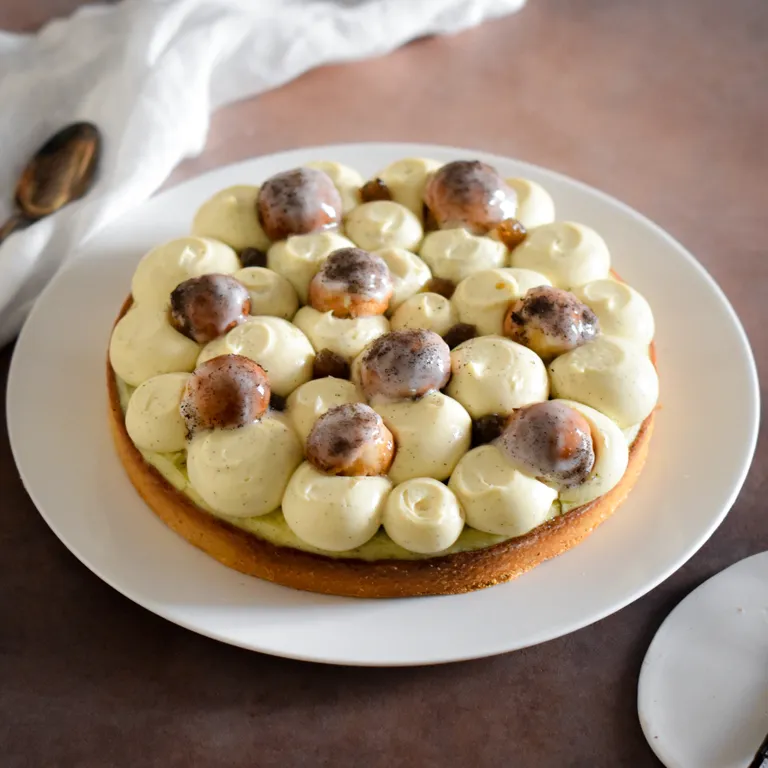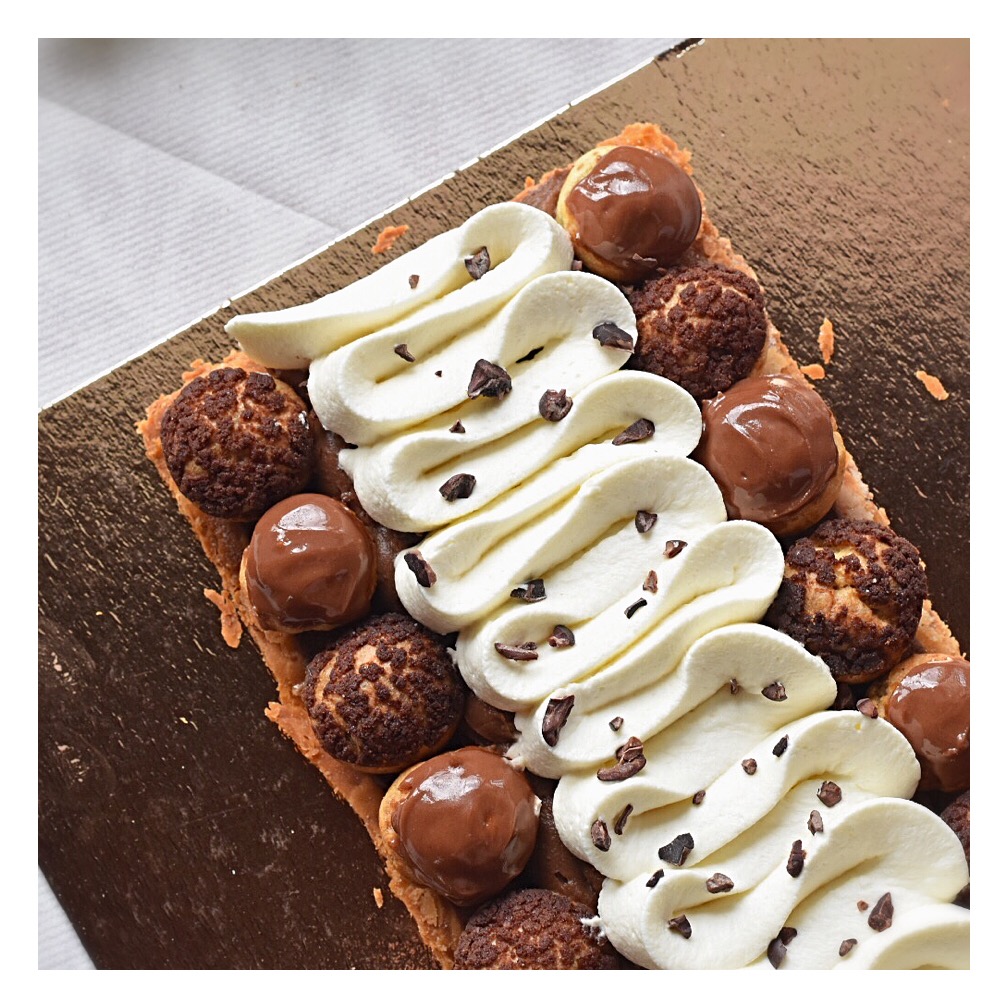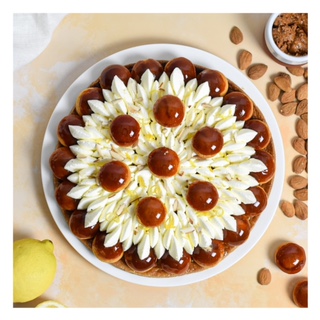Almond praliné & lemon saint-honoré
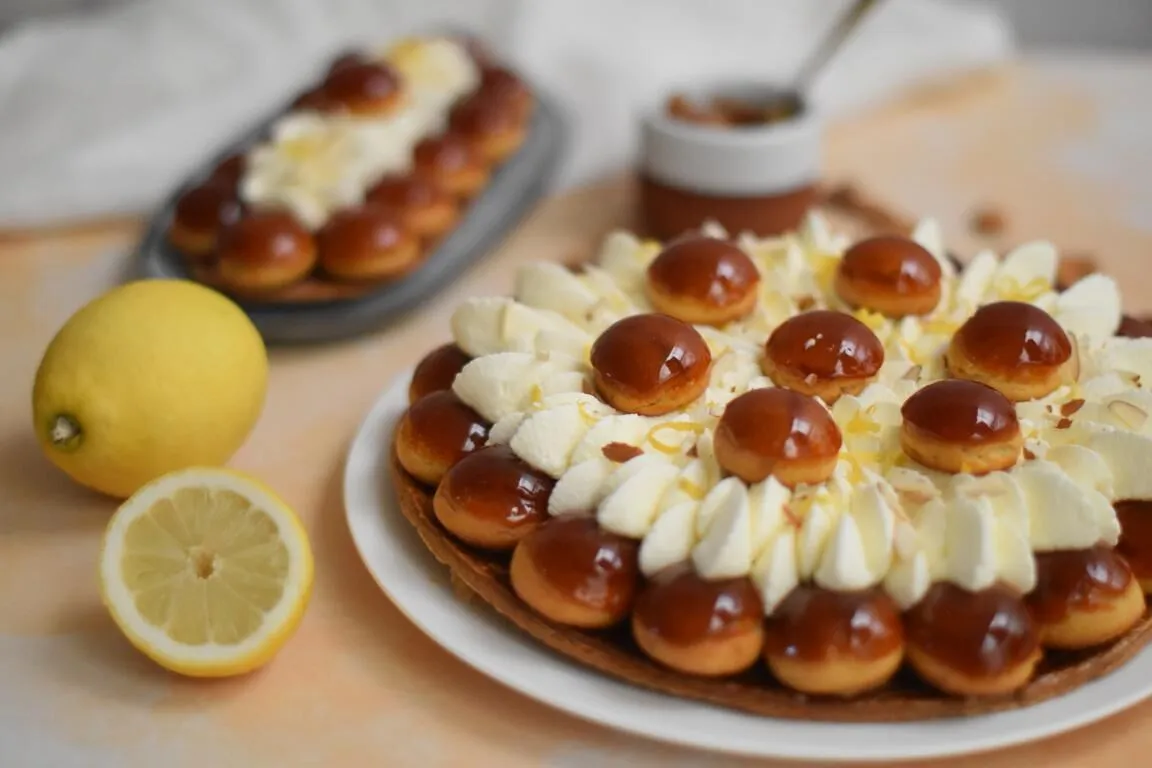
15 November 2020
It's been a very long time since I've made a saint-honoré ; even if I really like it, it's a cake that takes a lot of time and requires a lot of different preparations, so don't get into it if you only have an hour free ;) In this saint-honoré, I married the lemon to a delicious almond praliné. If you don't have the time, or can't make your own praliné, you can use a more classic almond/hazelnut praliné, the two nuts go very well with the lemon.
Prpe time : a few hours and some rest for the puff pastry
For about 10 servings :
Almond praliné :
300g almonds
200g sugar
60g water
A pinch salt
Roast the almonds for about 20 minutes at 150°C.
Prepare a syrup with water and sugar. When it boils, add the almonds and stir until the almonds caramelize. Then pour them on a baking tray covered with baking paper and let them cool completely.
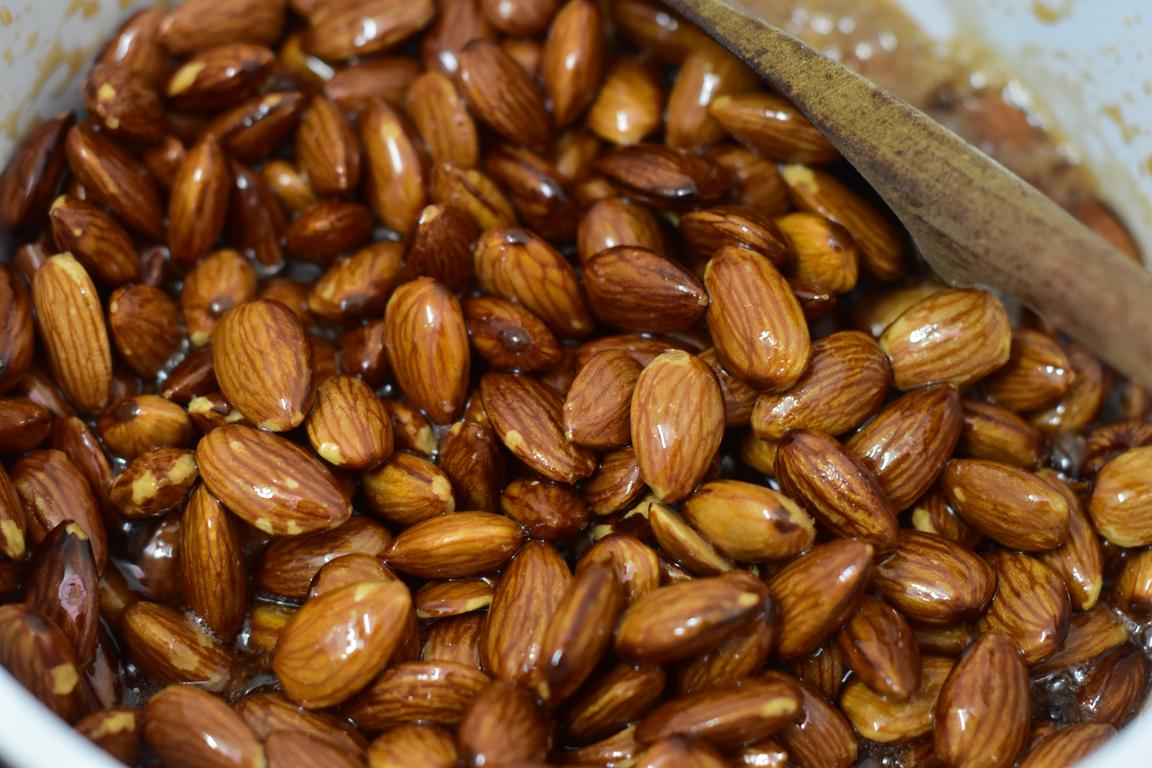
To finish, mix the caramelized almonds with the fleur de sel until you obtain a more or less smooth praline according to your preferences.
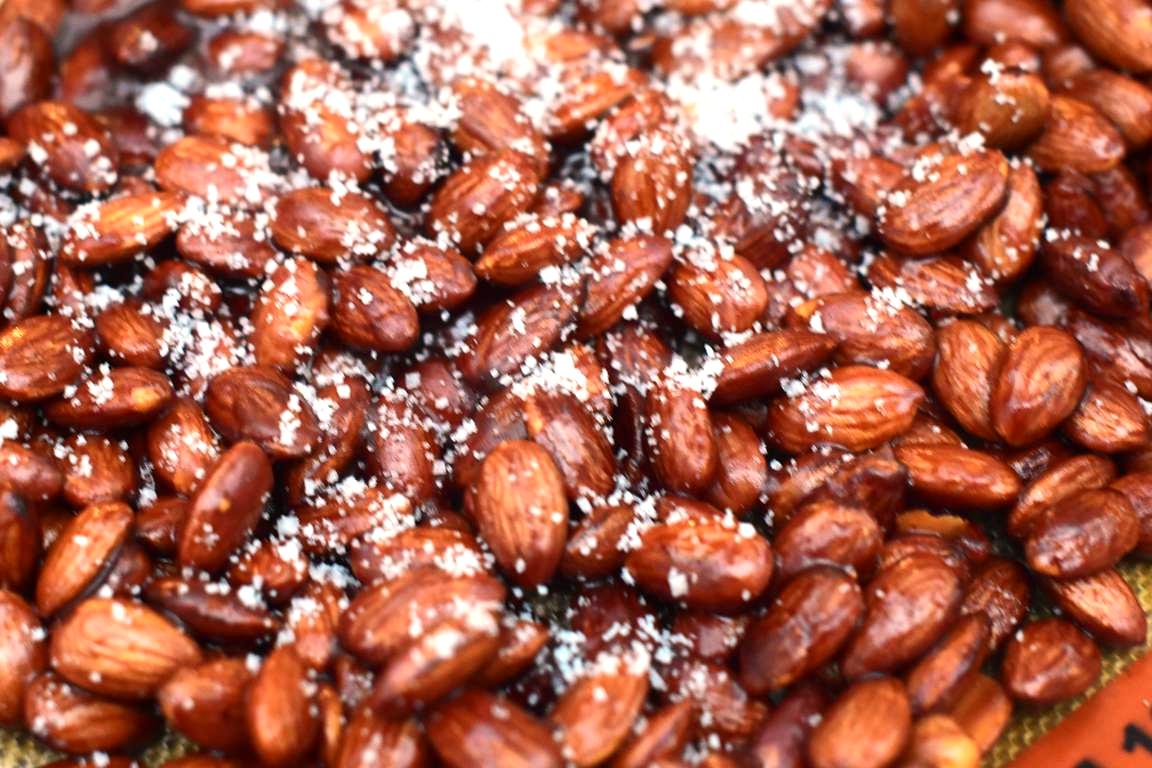
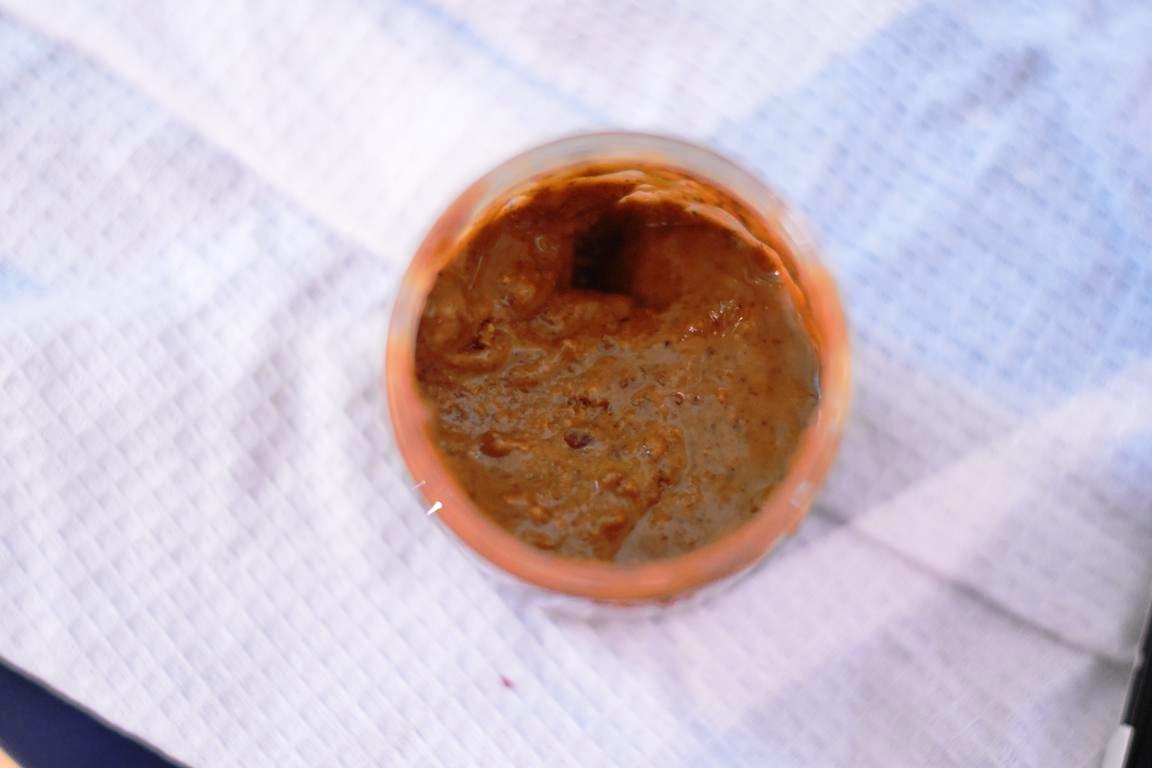
Puff pastry :
For this recipe you will need about 300g of puff pastry, I give you the ingredients (you will have more but you can easily cut dough pieces of about 250 to 300g and freeze them); of course, if you don't want to make the puff pastry yourself, you can always buy one.
500g flour T55
10g salt
250g water
50g butter
325g dry butter
Place the water, melted butter and salt in the bowl of the mixer with the kneading instrument. Then add the flour and knead on speed 1 for 1 to 2 minutes. Stop kneading as soon as the dough is homogeneous, if you knead too long the dough will become elastic.
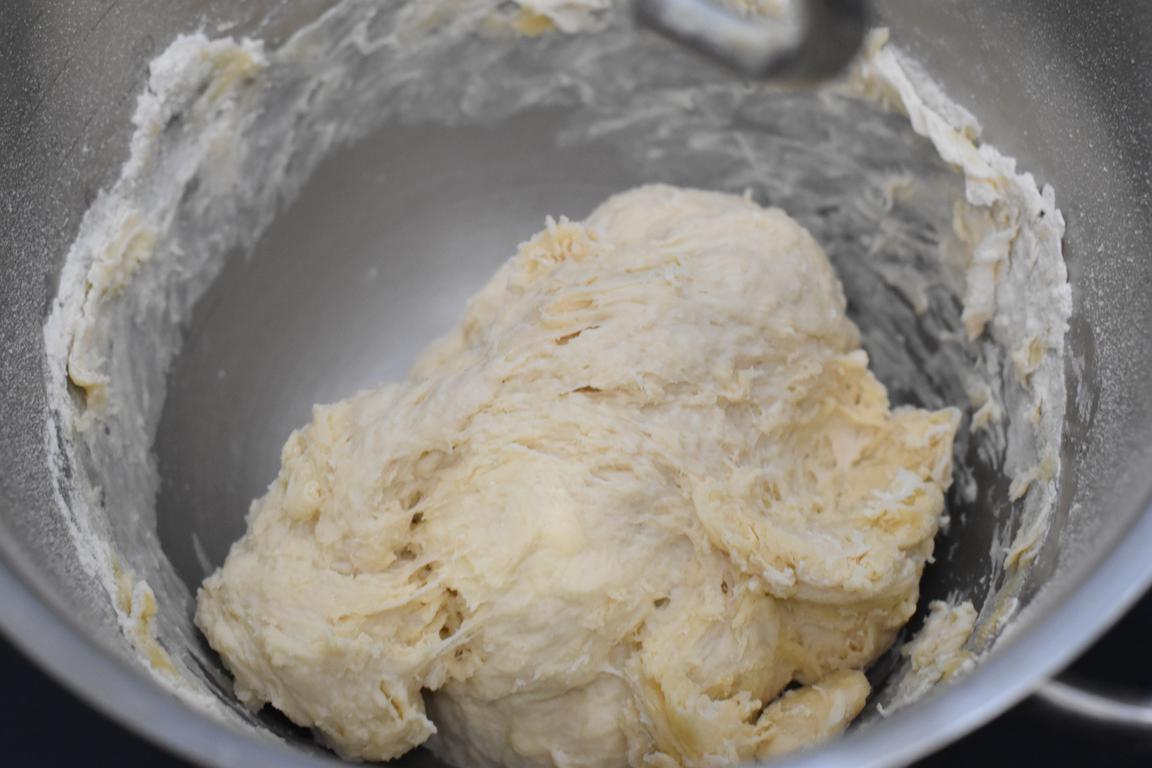
Put some flour on the worktop, place the dough on the worktop and form a ball. Spread it out slightly to form a small rectangle, then put it in a plastic wrap and place it in a cool place for at least 30 minutes.

10 minutes before the end of the rest of the dough, take the butter out of the refrigerator. Tap the butter with the rolling pin several times so that the butter is elastic but not oily or hot. The butter should be soft, shiny and elastic but not sticky.
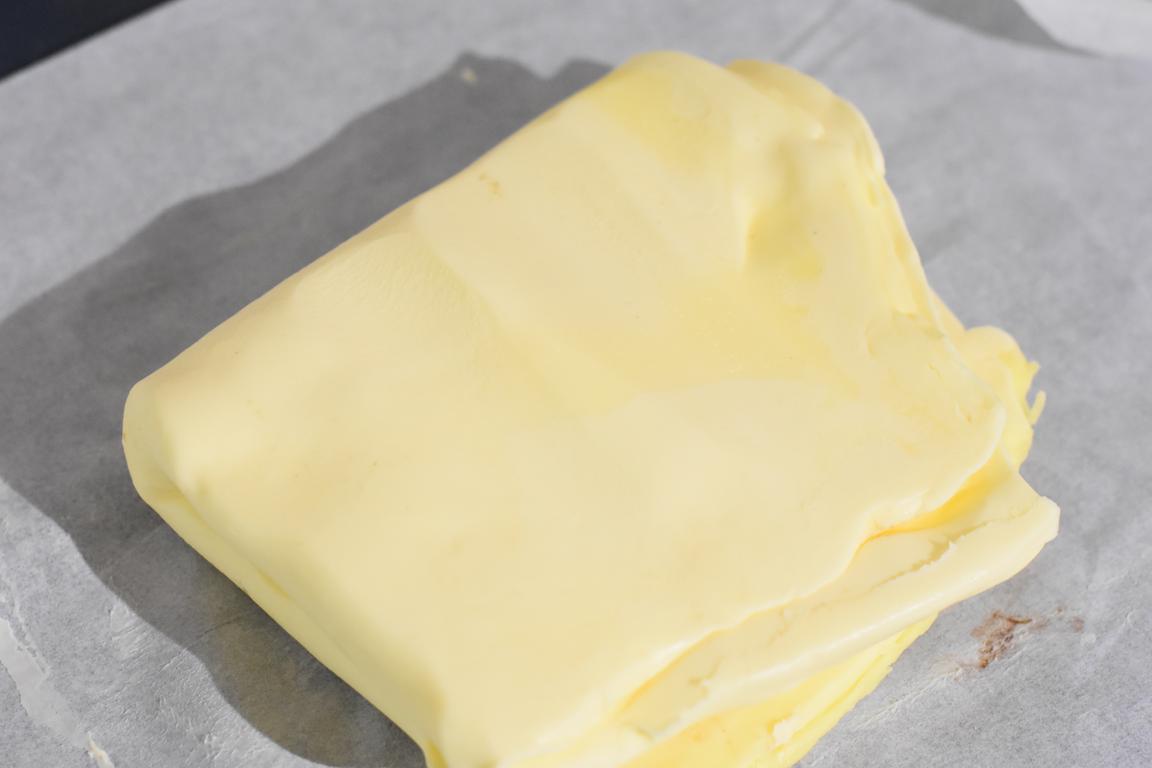
Put the butter in the center of a sheet of baking paper and fold it into a small rectangle. Spread the butter in this "envelope" of parchment paper so as to have an even thickness, then place it in the refrigerator with the dough so that they are at the same temperature.
Then spread the dough so that it is of the same length and twice as wide as the butter.
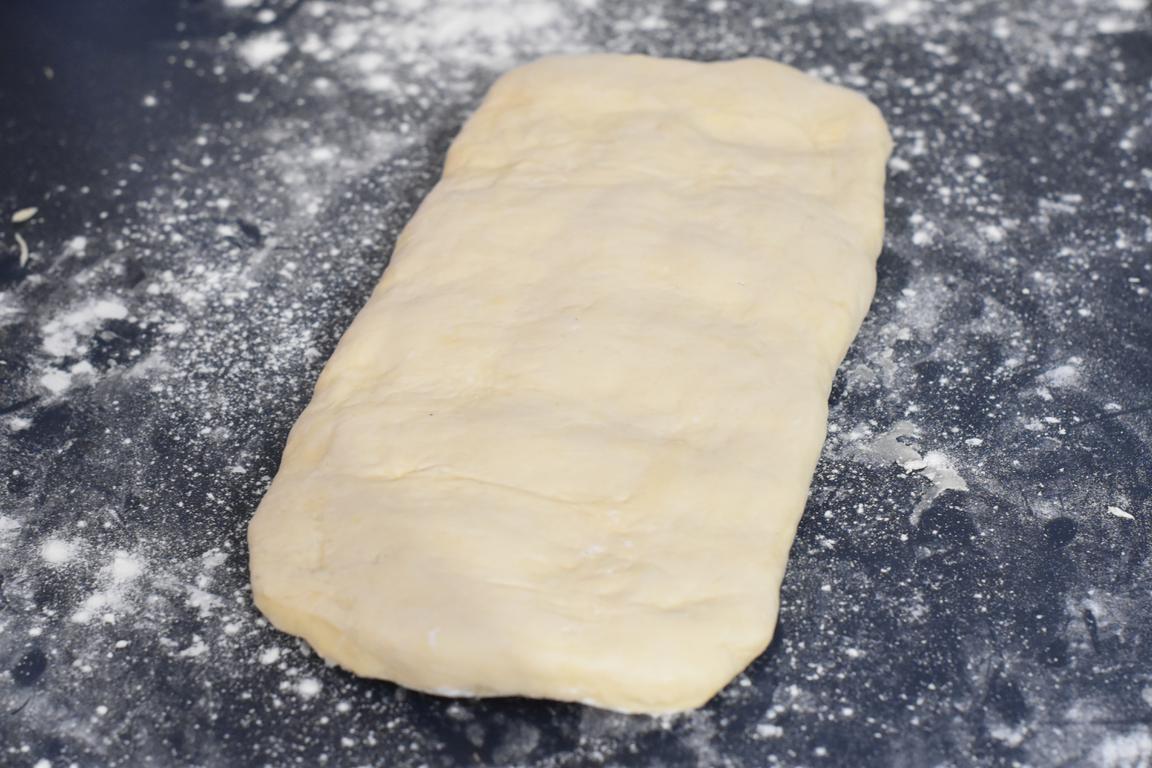
Place the butter in the center of the dough, and fold the dough to enclose the butter, being careful not to trap any air bubbles between the butter and the dough.

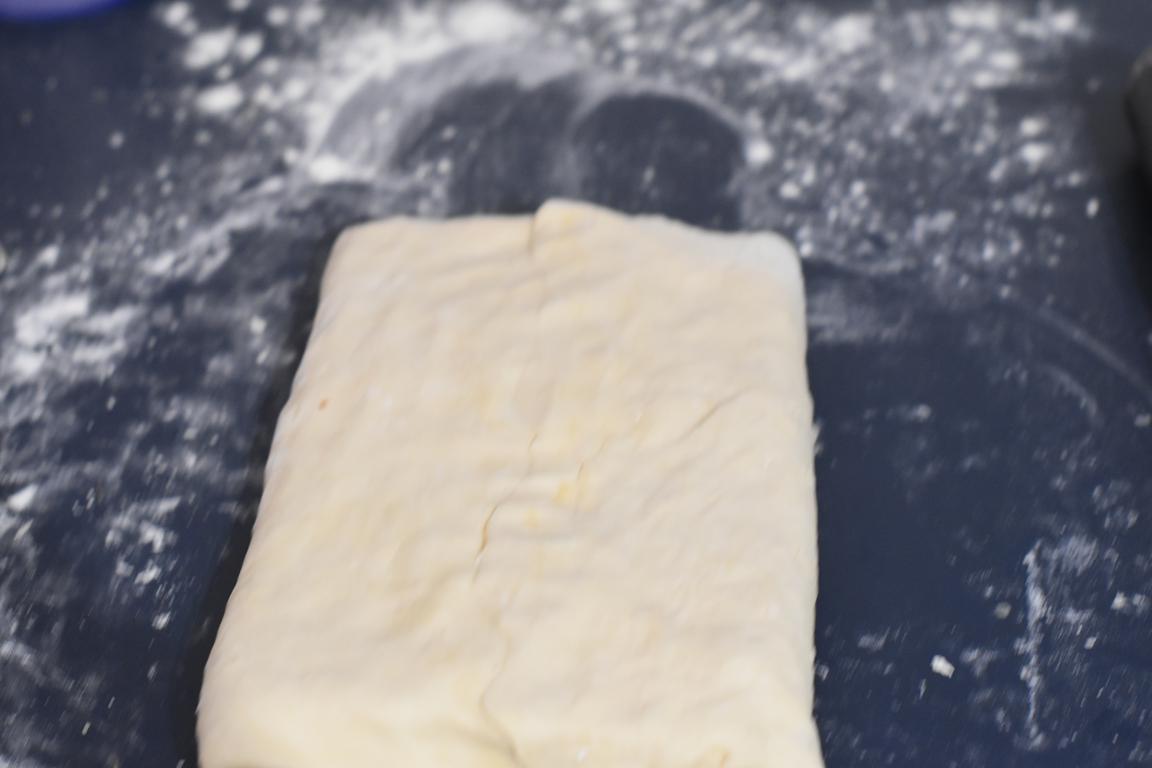
Weld the two elements together by pressing them together with the rolling pin.
Then roll out the dough (if necessary, remember to flour the worktop). The dough should be between 3 and 4 times longer than it is wide.
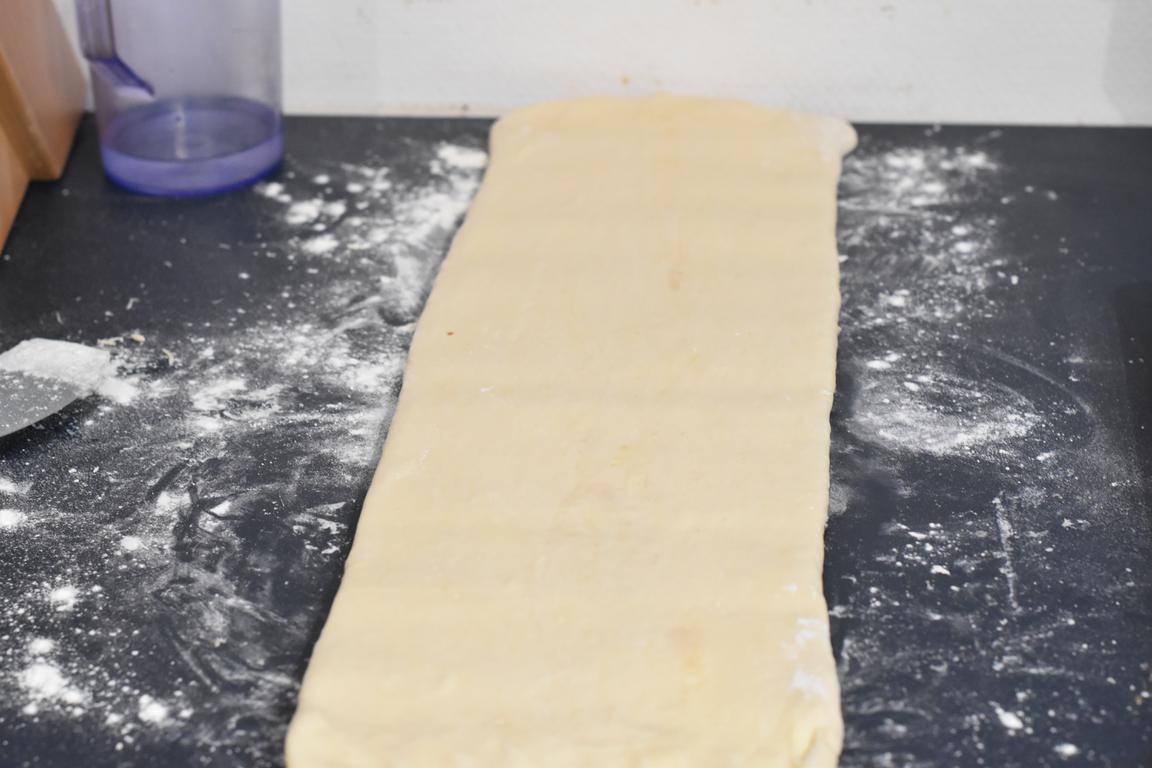
Then remove the flour with a brush, then make a double turn : fold the bottom of the dough up a little, then the top of the dough down (the place where the two meet should not be in the middle, but in the bottom half of the dough).
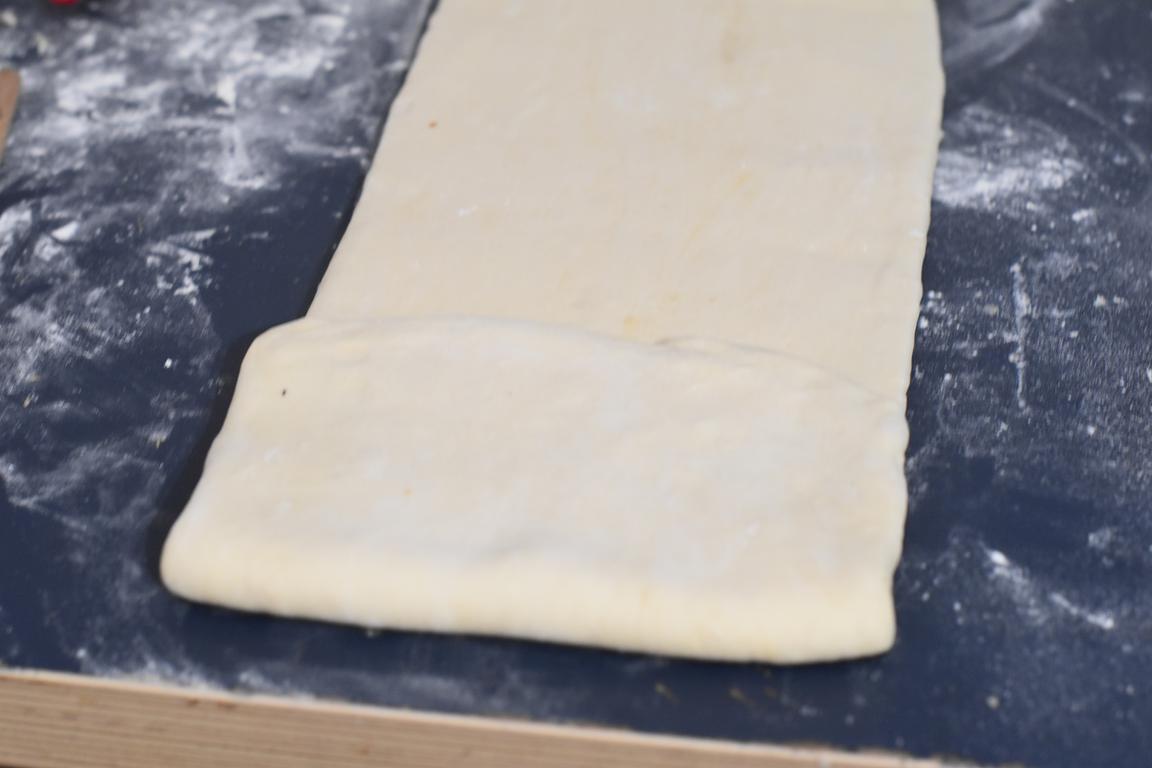
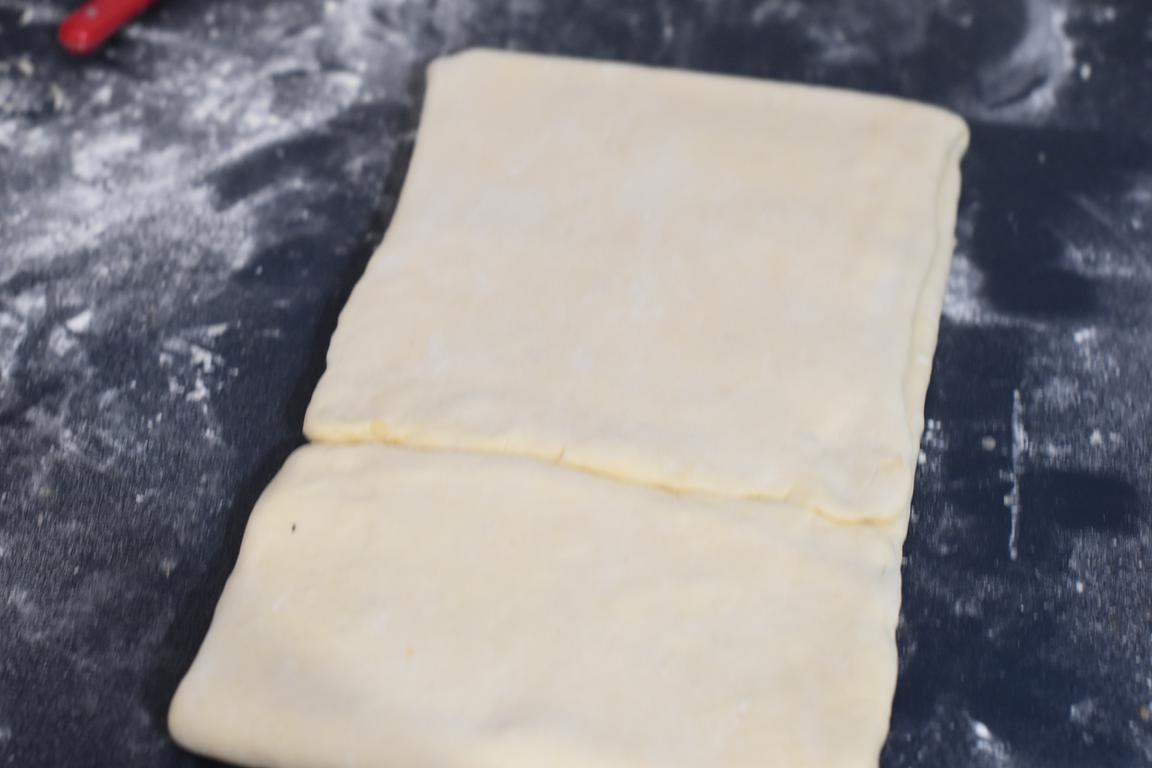
The edges must meet properly, you can pull a little on the dough to have edges that meet well, but without overlapping. Then fold the dough in half, then turn the dough a quarter turn so that the opening is on the right side (like a book).
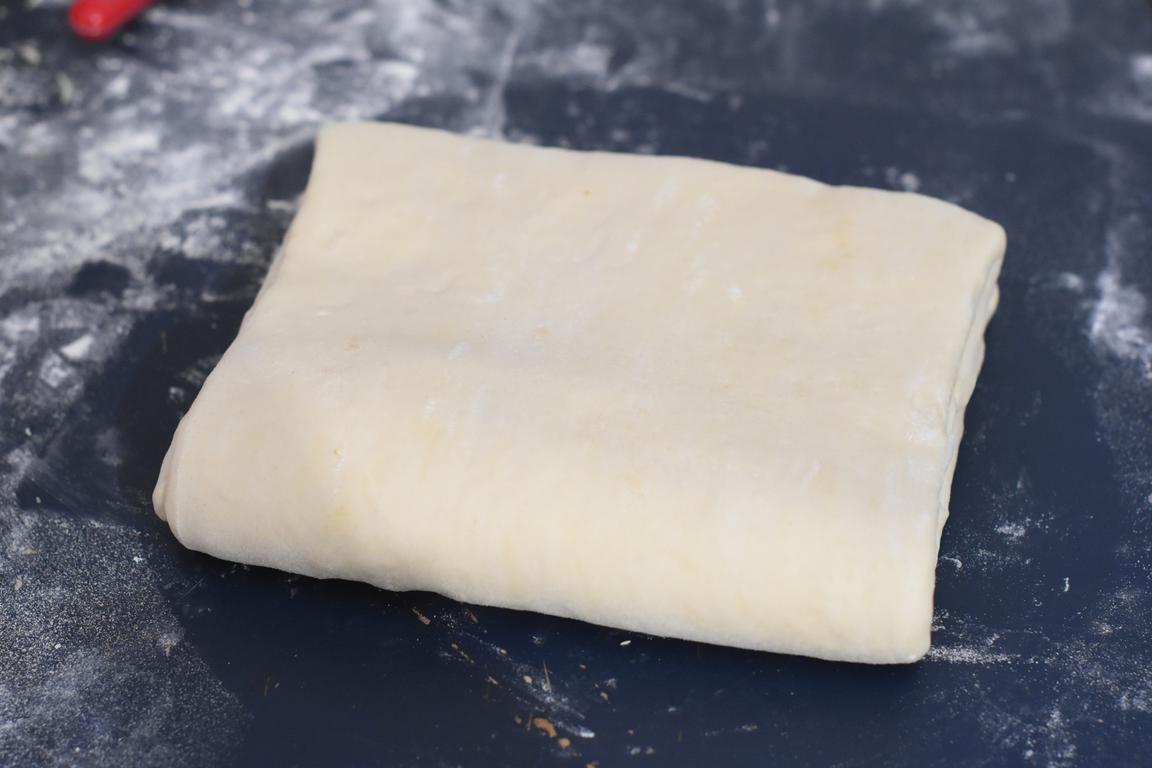
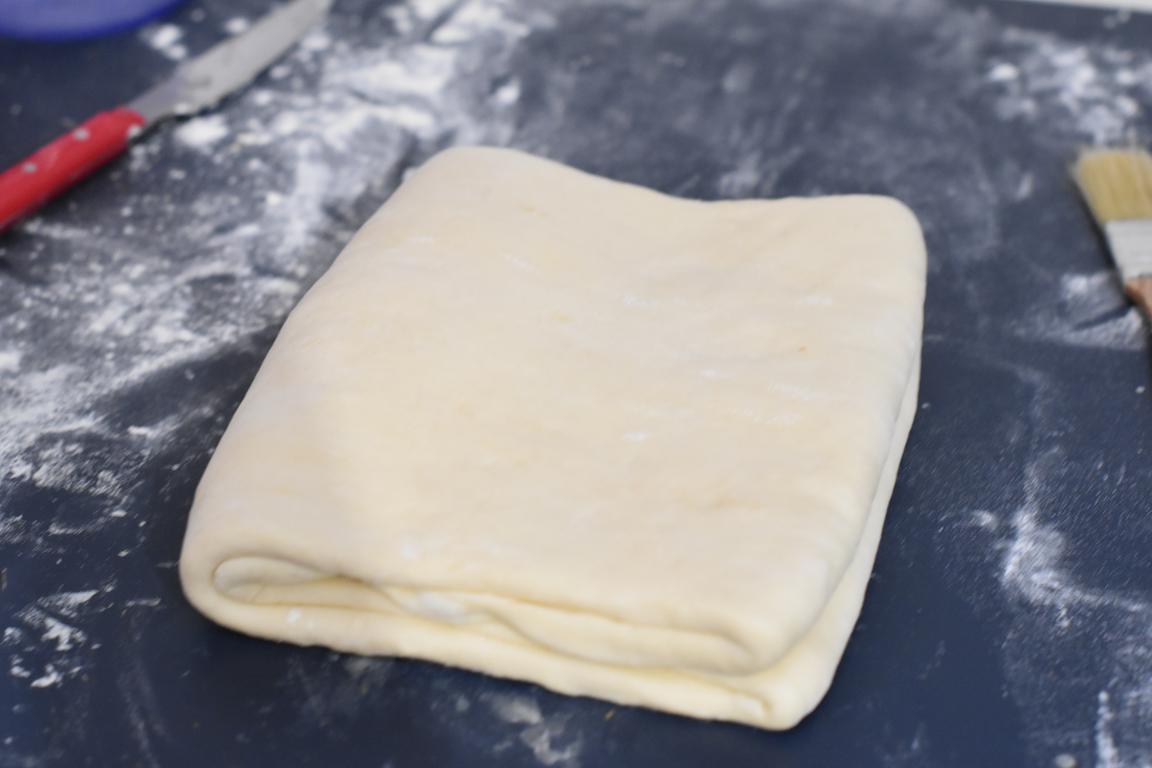
Solder the top and bottom of the dough by pressing lightly with the rolling pin.
If the dough is still cold and has the right consistency, you can continue with the second double turn, otherwise film it and place it in a cool place for 30 minutes before continuing.
After the second double turn, film the dough and leave it in the fridge for at least 30 minutes.
After resting, make two double turns again (same as the first time, if you feel that your dough has warmed up, is sticky or other problems, you can put it back in the fridge for a few minutes between the 3rd and 4th double round).
After the last double round, film the dough and leave it in the fridge for another 30 minutes minimum.
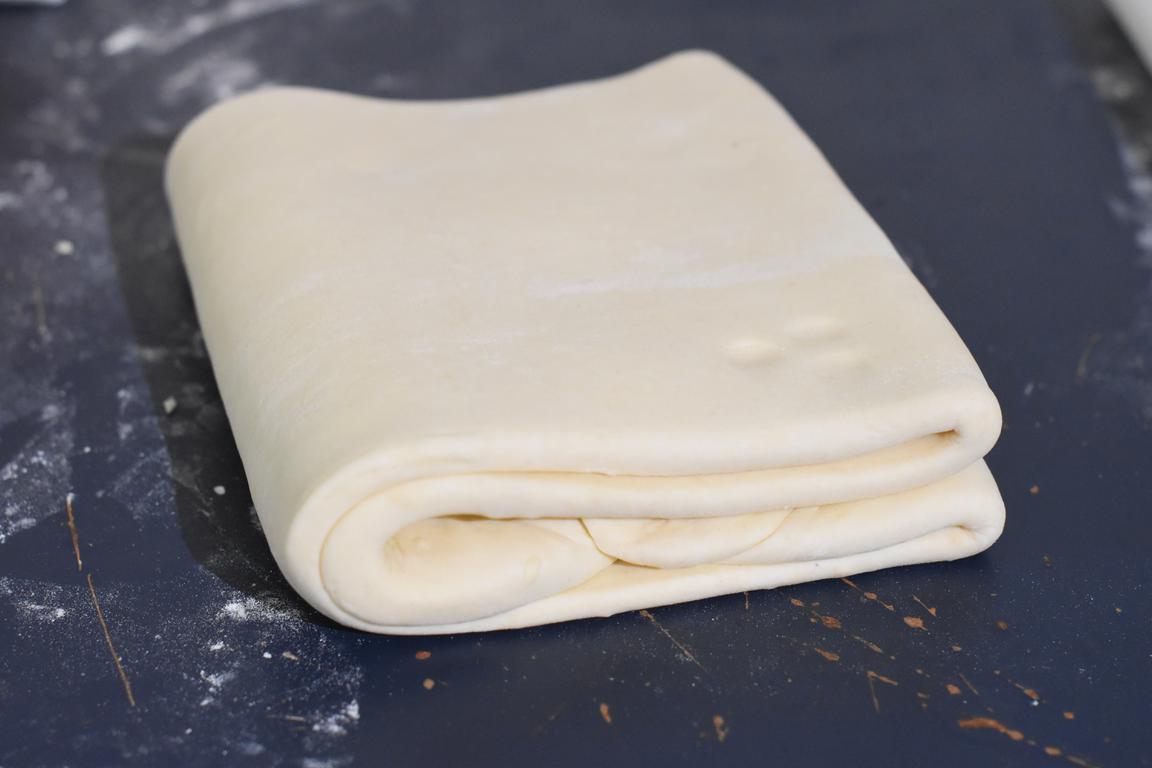
Then, take about 300g of dough and spread them out according to the shape you want (I made a big circle of about 25/26cm in diameter and a small oval (about 15 by 7cm) with the scraps). Place the dough on a baking sheet covered with baking paper, film it on contact and keep it in the fridge for about 30 minutes. Then prick it with a fork and bake in the preheated oven at 200°C for 10 minutes. After 10 minutes, lower the temperature to 180°C, cover the dough with a sheet of baking parchment and place a slightly heavy baking tray on top so that the puff pastry develops evenly. Continue baking for 30 minutes, then take the dough out of the oven and set the oven to 260°C. Sprinkle the puff pastry with powdered sugar, and put it back in the oven for about 5 minutes (watch out, the pastry must be well browned and caramelized but it can burn quickly).
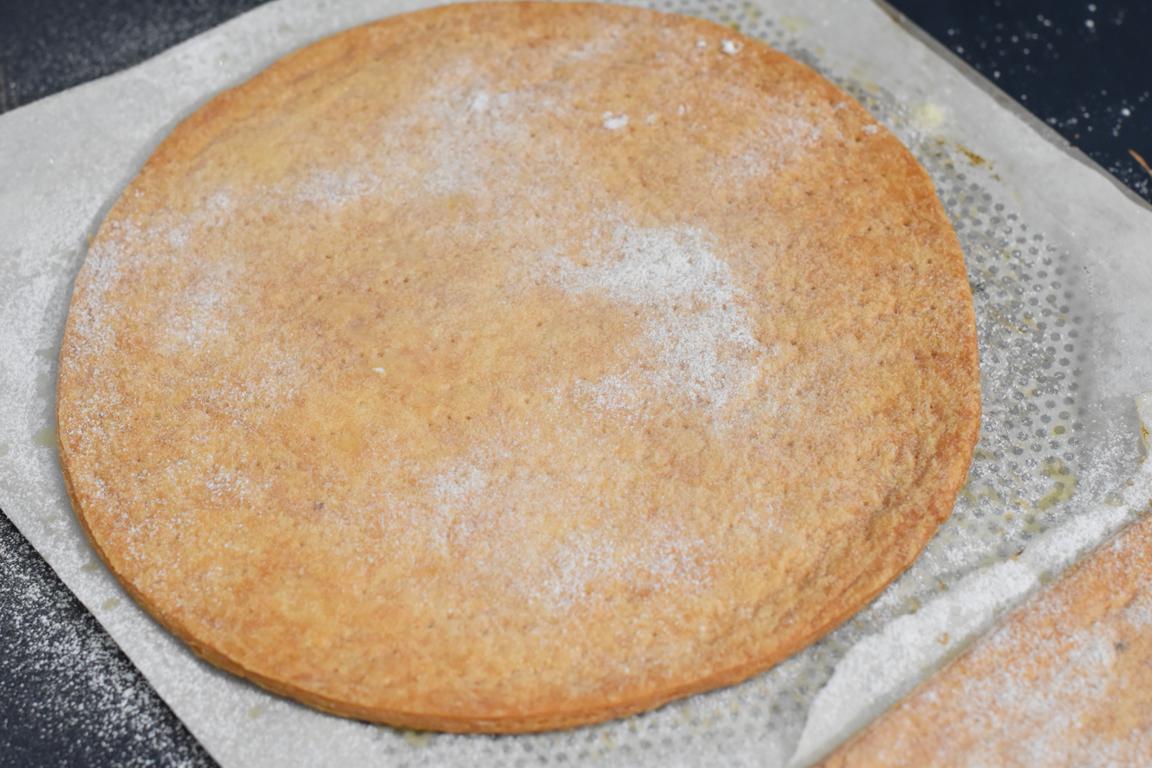

Choux pastry :
100g water
100g milk
2g sugar
2g salt
4g honey
80g butter
120g flour T55
200g eggs
Put the water, milk, butter, salt, sugar and honey in a saucepan.
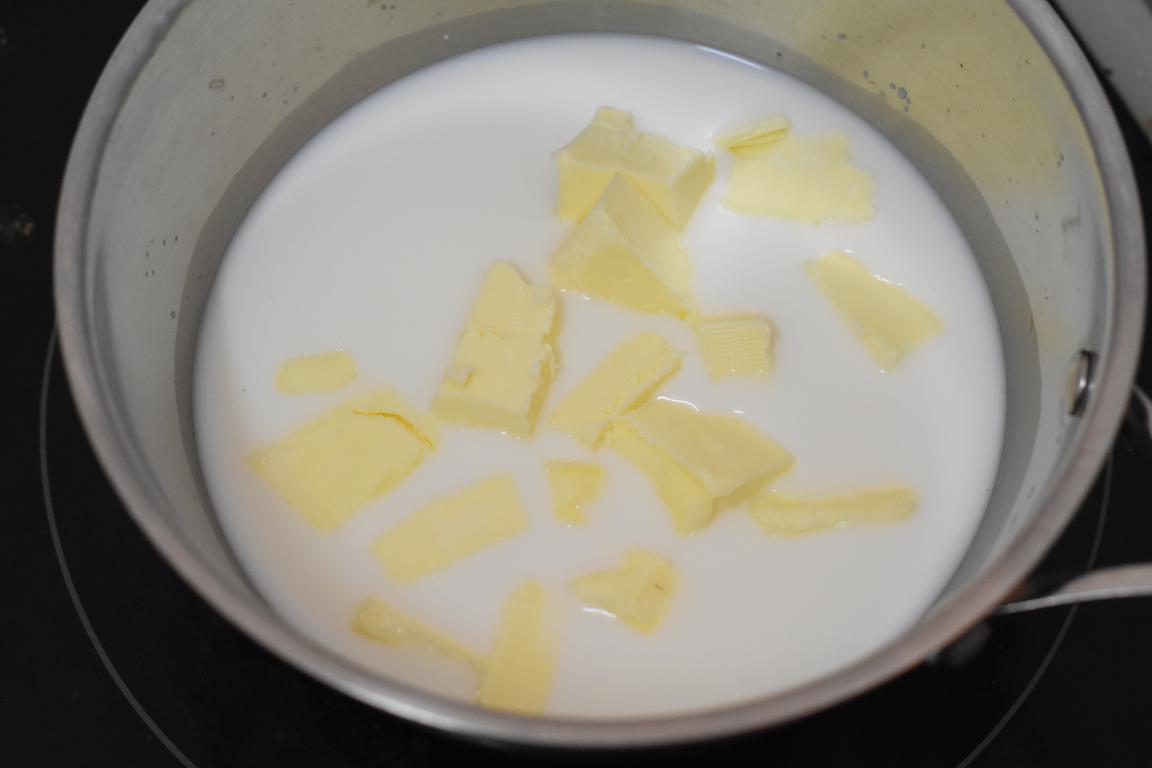
Bring the mixture to the boil. Remove from the heat, add the flour, mix well to avoid lumps, then return to medium heat.
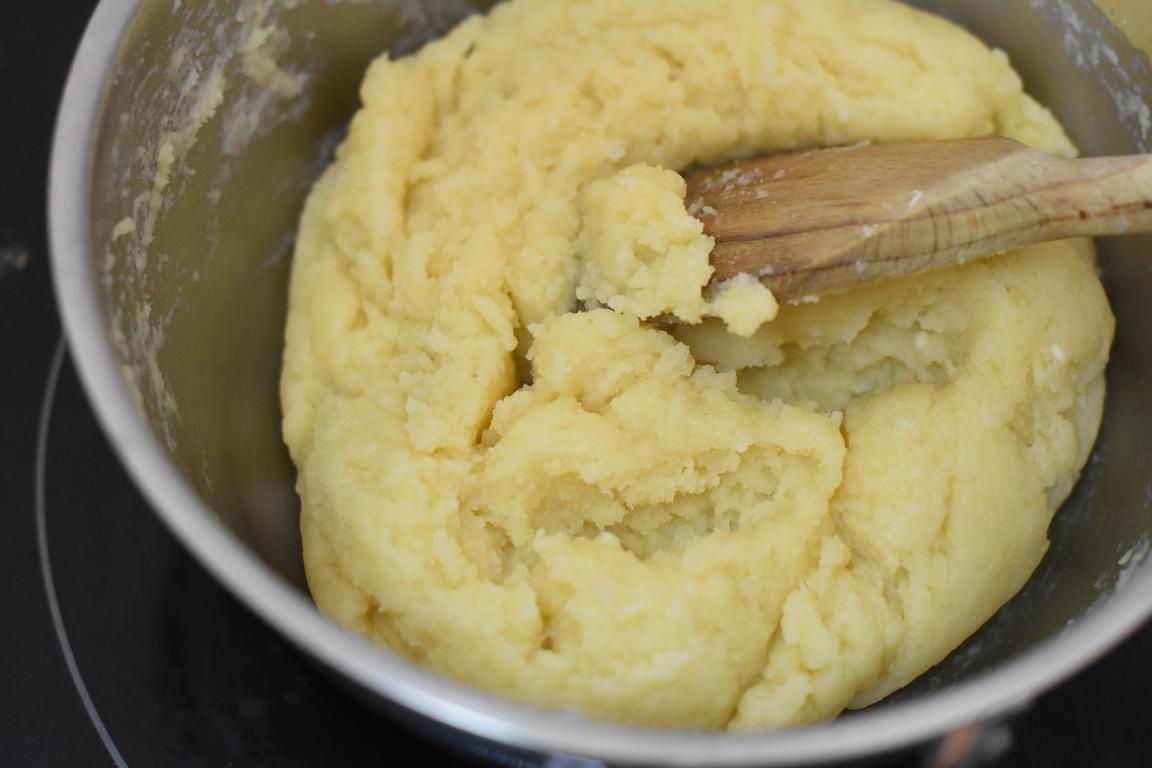
Stir constantly to dry out the dough until a thin film covers the bottom of the pan and the dough comes away from the sides of the pan.

Pour the dough into the food processor bowl and mix at medium speed so that the steam escapes. Then gradually add the eggs until the choux pastry is smooth and satiny.
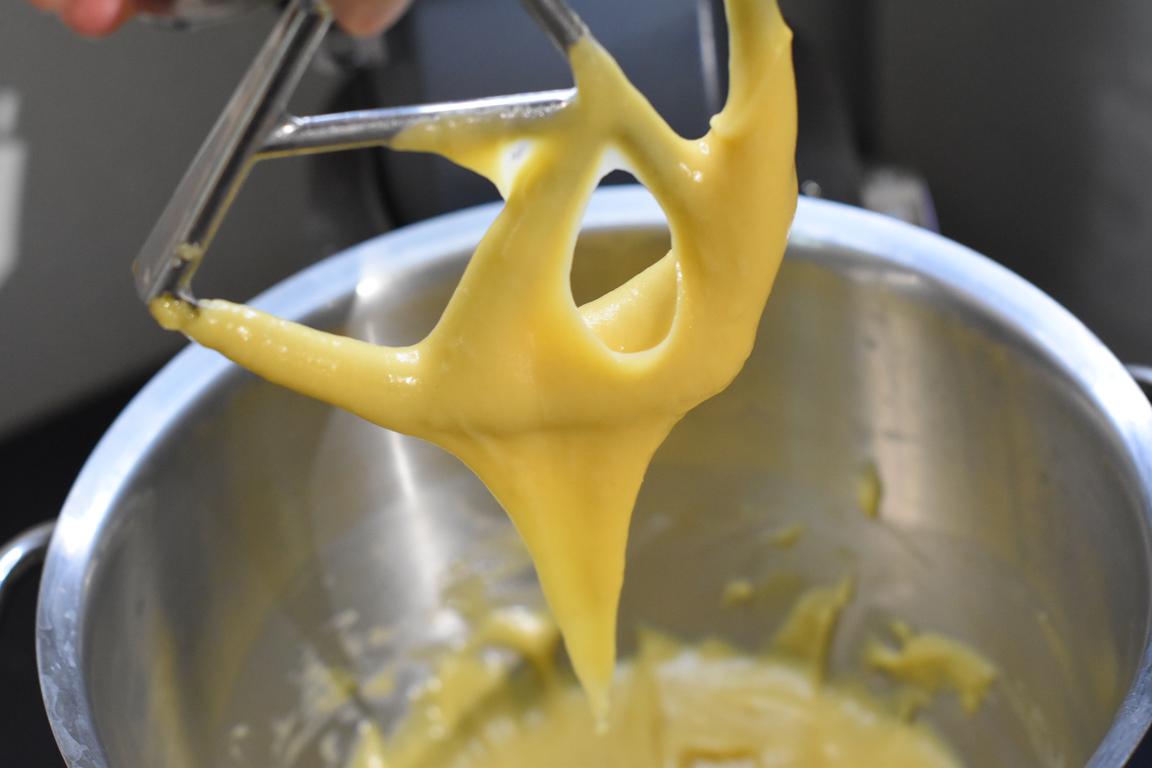
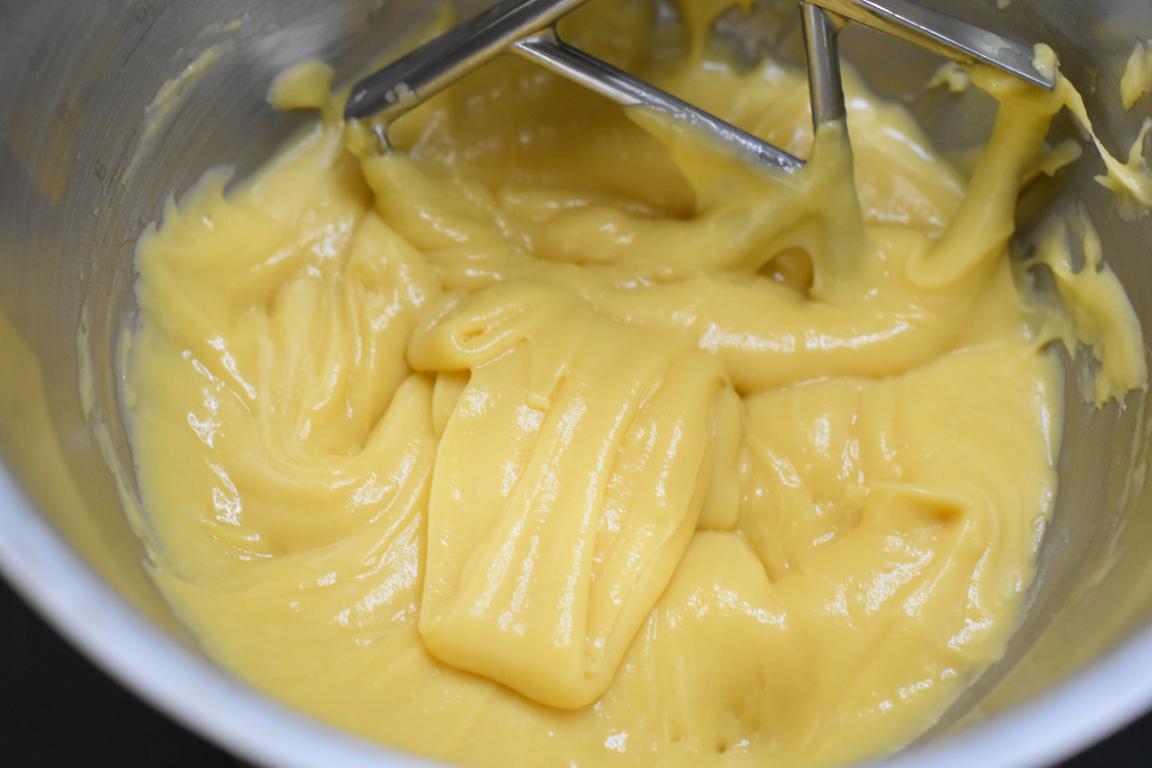
Put the choux pastry in a piping bag with a plain tip. Pipe small choux 2 to 3cm in diameter.
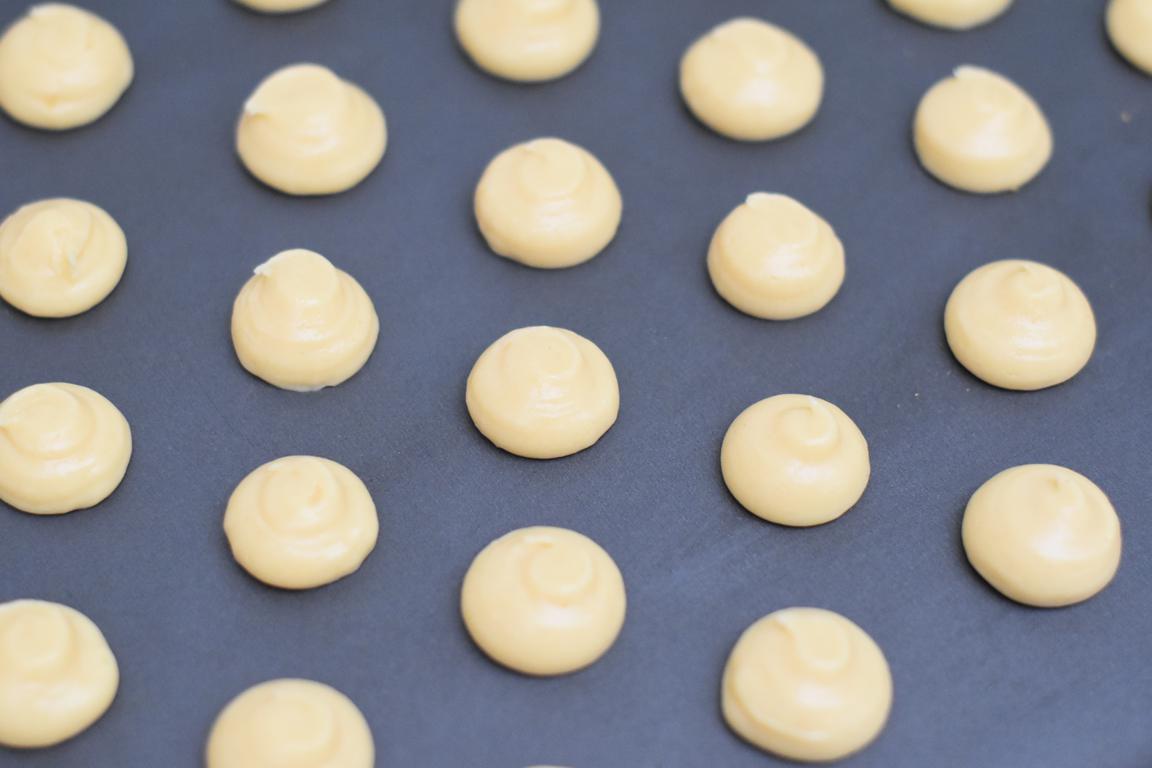
To have pretty choux, I sprinkle my raw choux with a 50/50 mixture of powdered sugar and cocoa butter powder ; if you don't have cocoa butter, you can only sprinkle them with powdered sugar, they will be more golden at the end of the cooking.

Bake in the preheated oven at 180°C, static heat, for approx. 30 minutes, then allow to cool down.
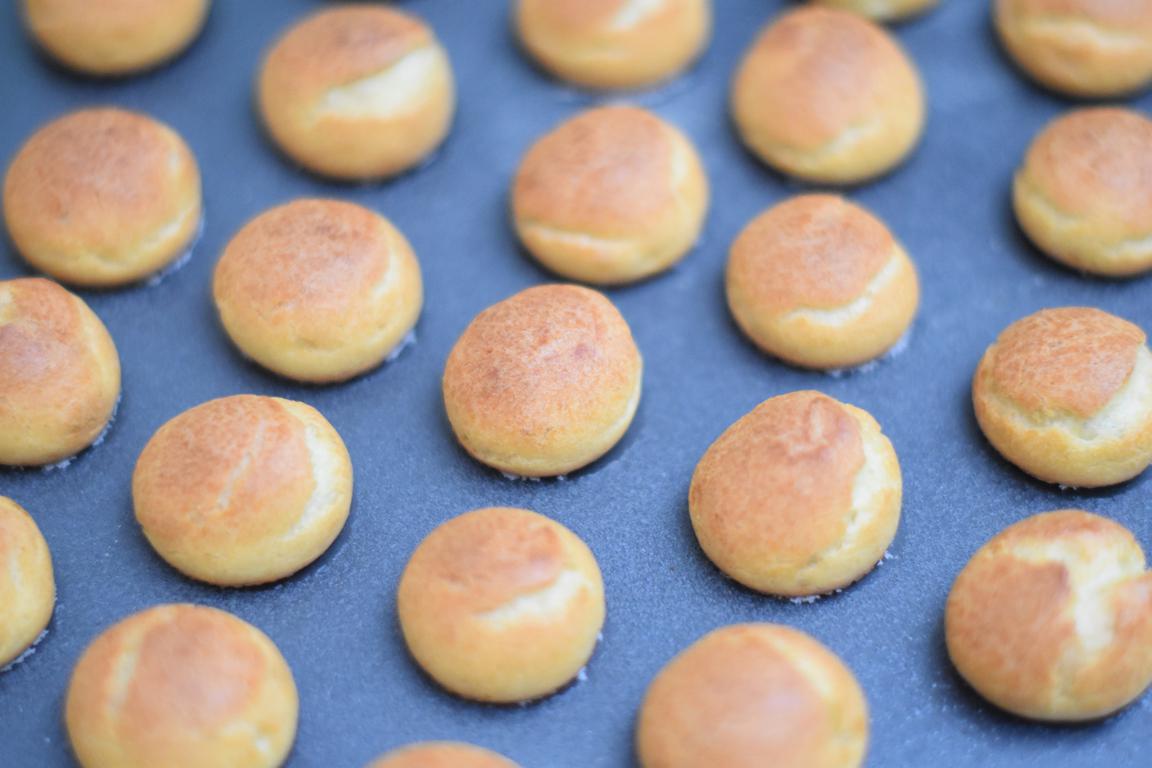
Almond praliné & lemon cream :
160g milk
145g liquid cream
100g lemon juice
3 eggs
75g sugar
45g cornstarch
45g butter
140g almond praline
Heat the milk, liquid cream and lemon juice.
Whisk the eggs with the sugar and cornstarch.
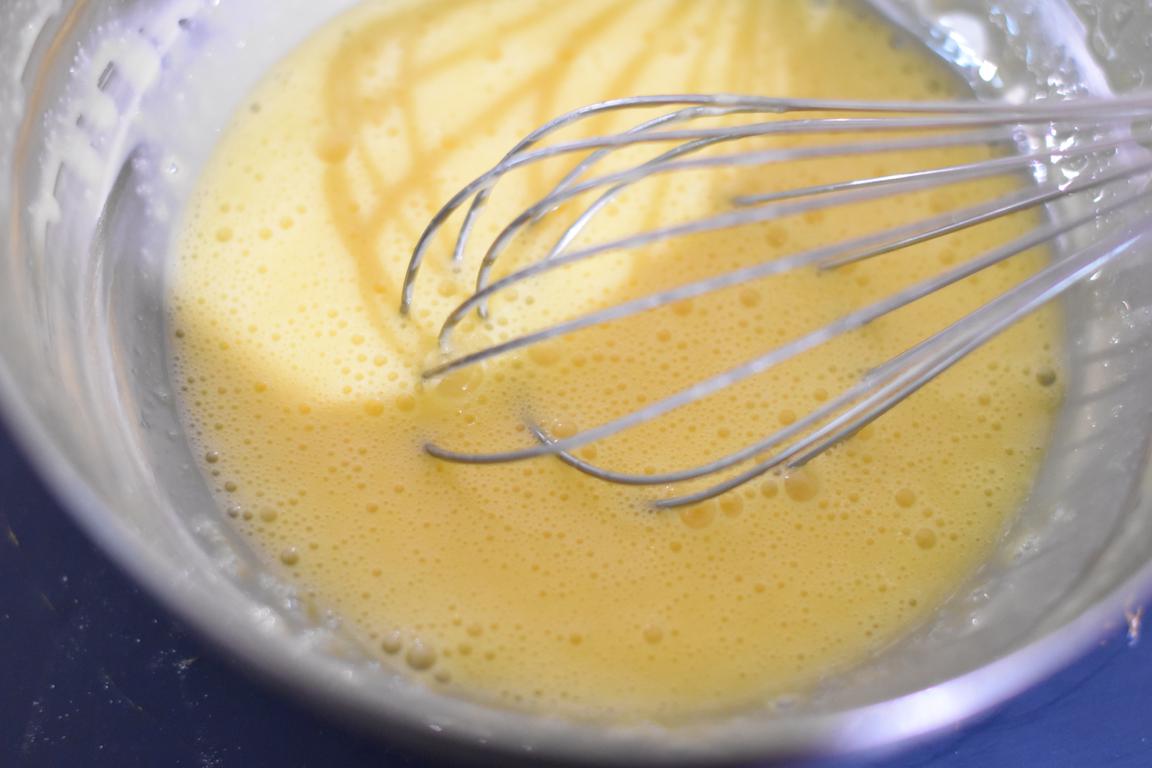
Pour half of the hot liquid over it, whisking well.

Pour into saucepan and thicken over medium heat, stirring constantly.
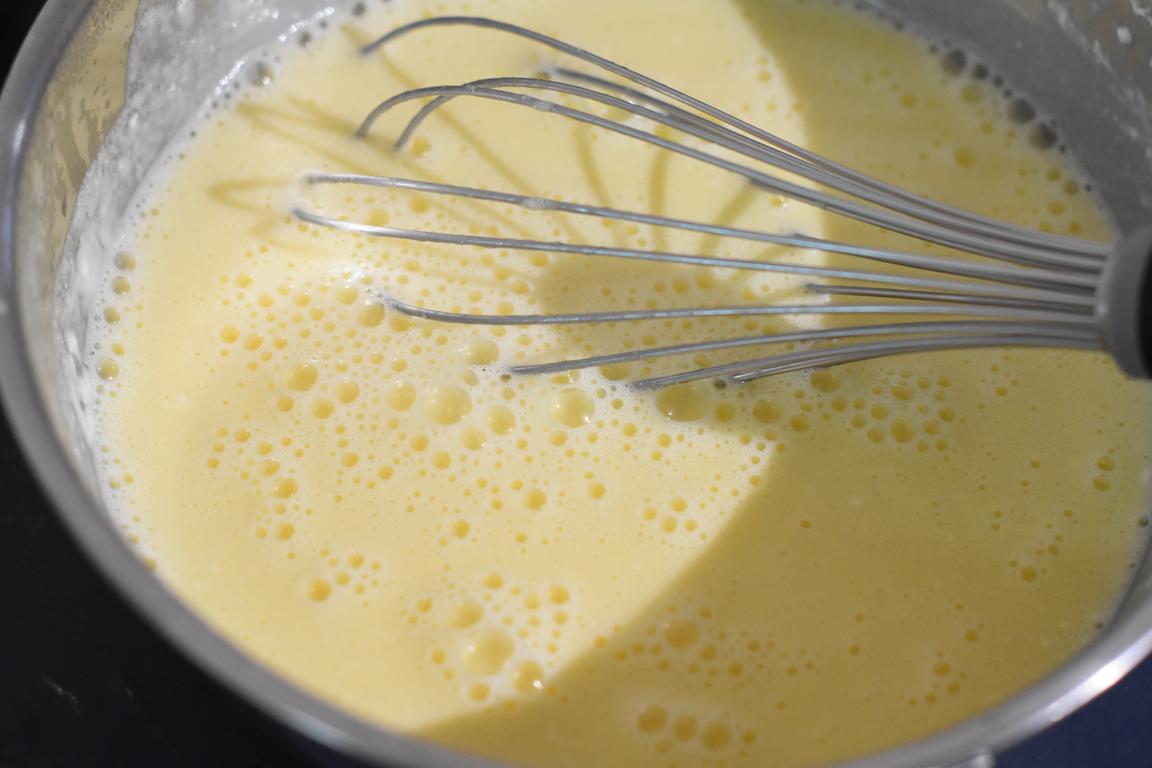
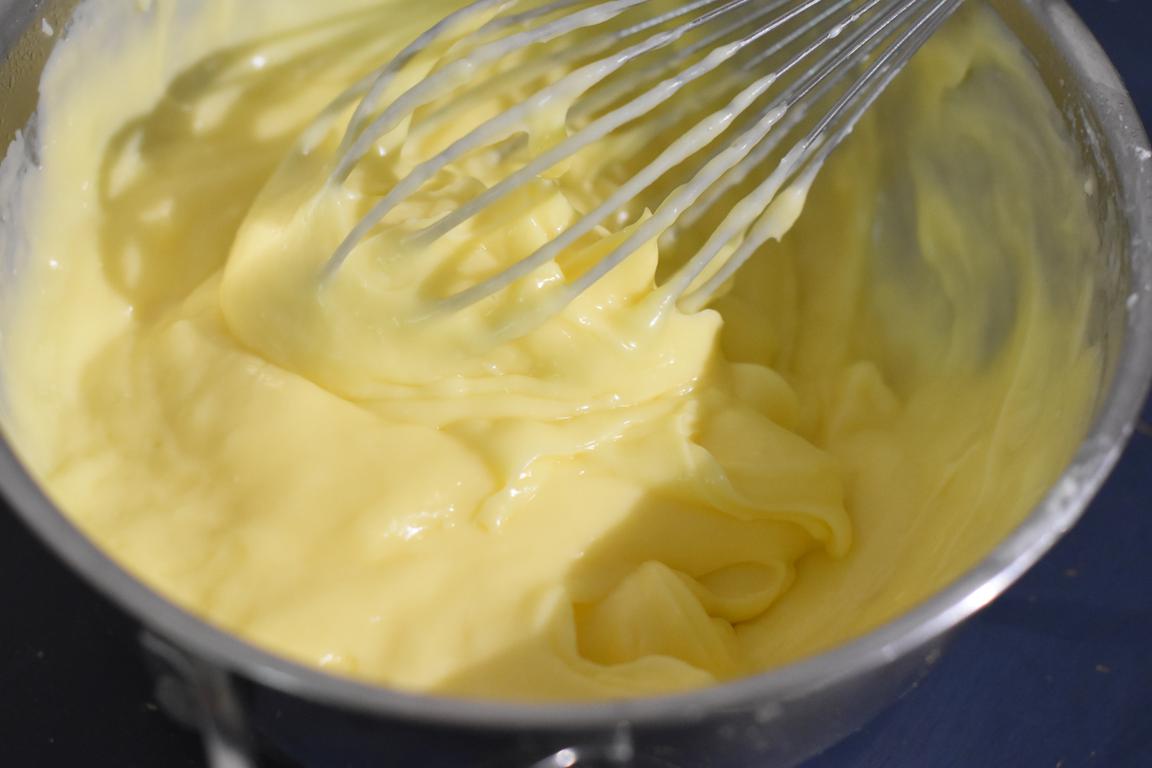
When the cream is thickened, add out of the fire, the butter cut in small pieces, and finally the almond praliné.
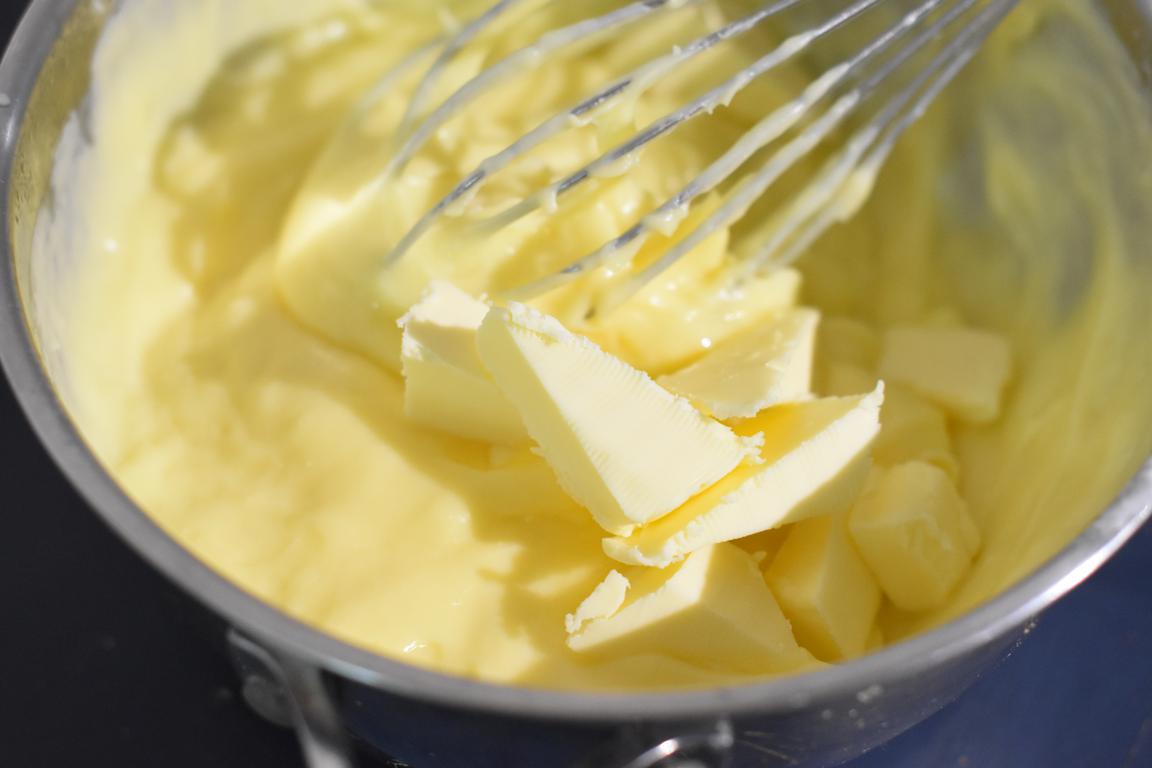
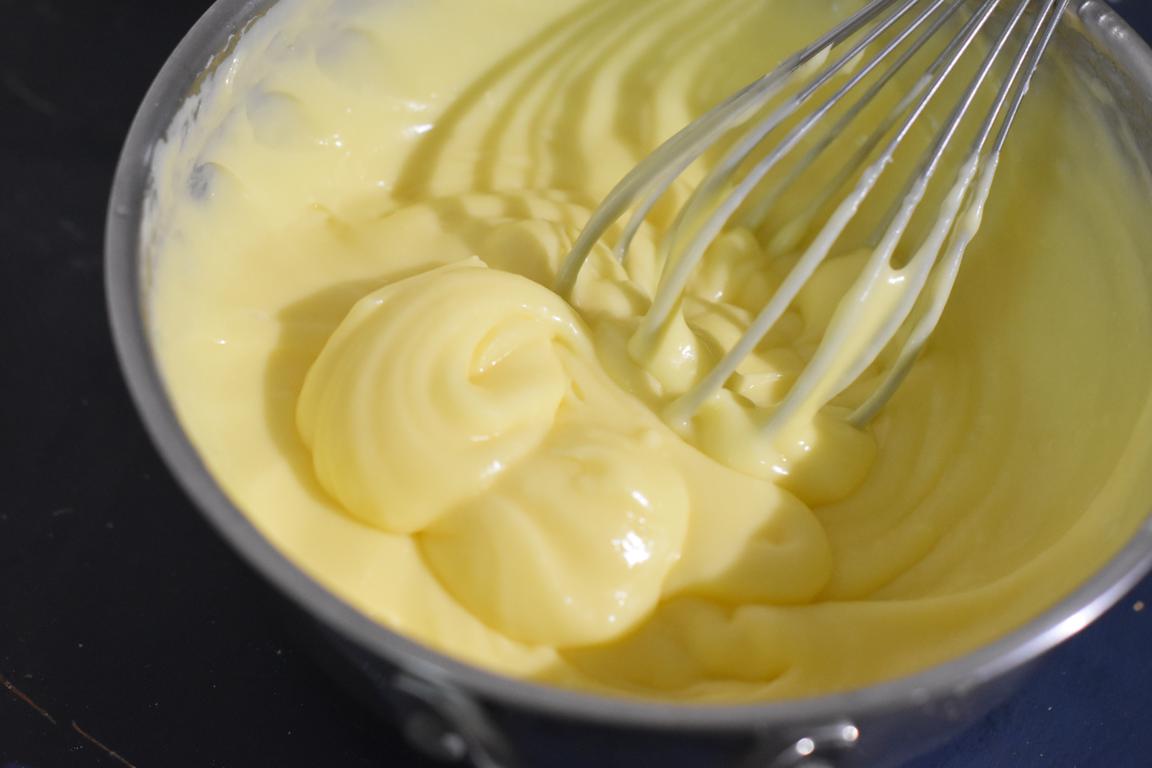
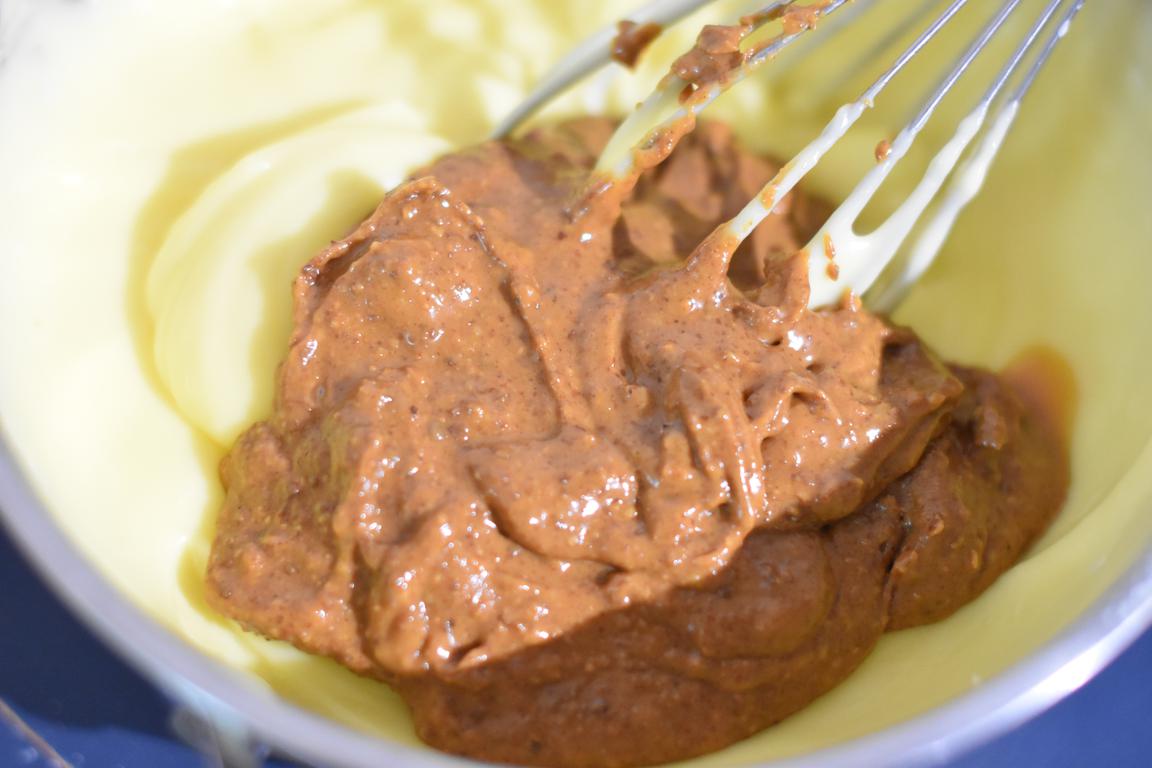
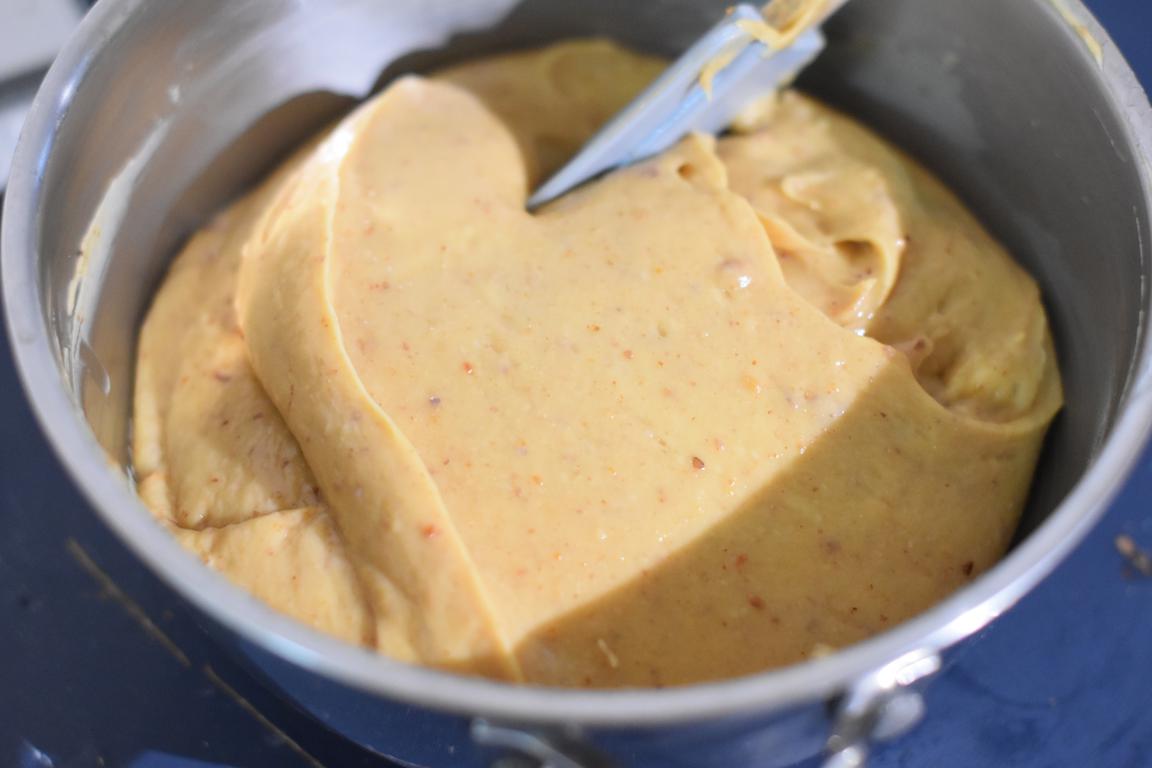
Mix well, when the cream is homogeneous, pour it in a plate, put a plastic wrap on it and put it in the refrigerator.
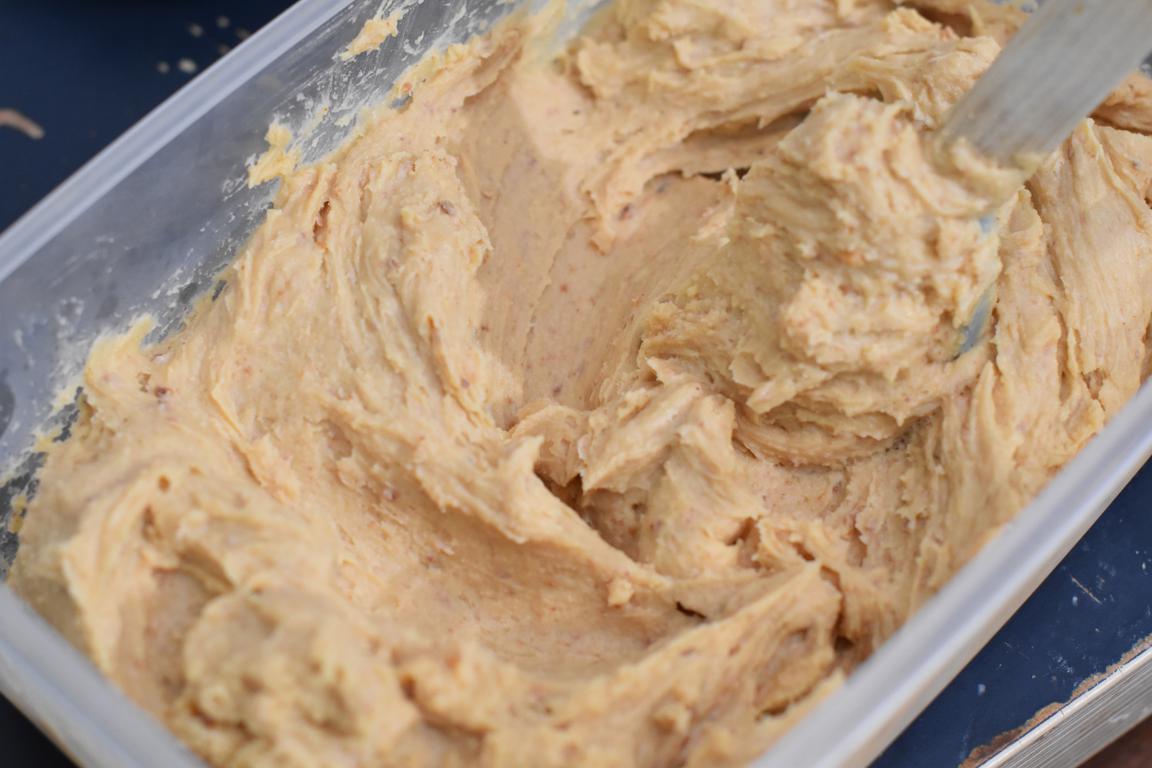
Caramel :
300g caster sugar (you won't use all of it but you need a certain amount to be able to soak the choux in order to glaze them)
If you have any, prepare half-sphere silicone mold on your worktop ; otherwise, place a sheet of baking paper on a plate.
Gradually melt the sugar, adding it little by little, over low heat, until you get a nice color.
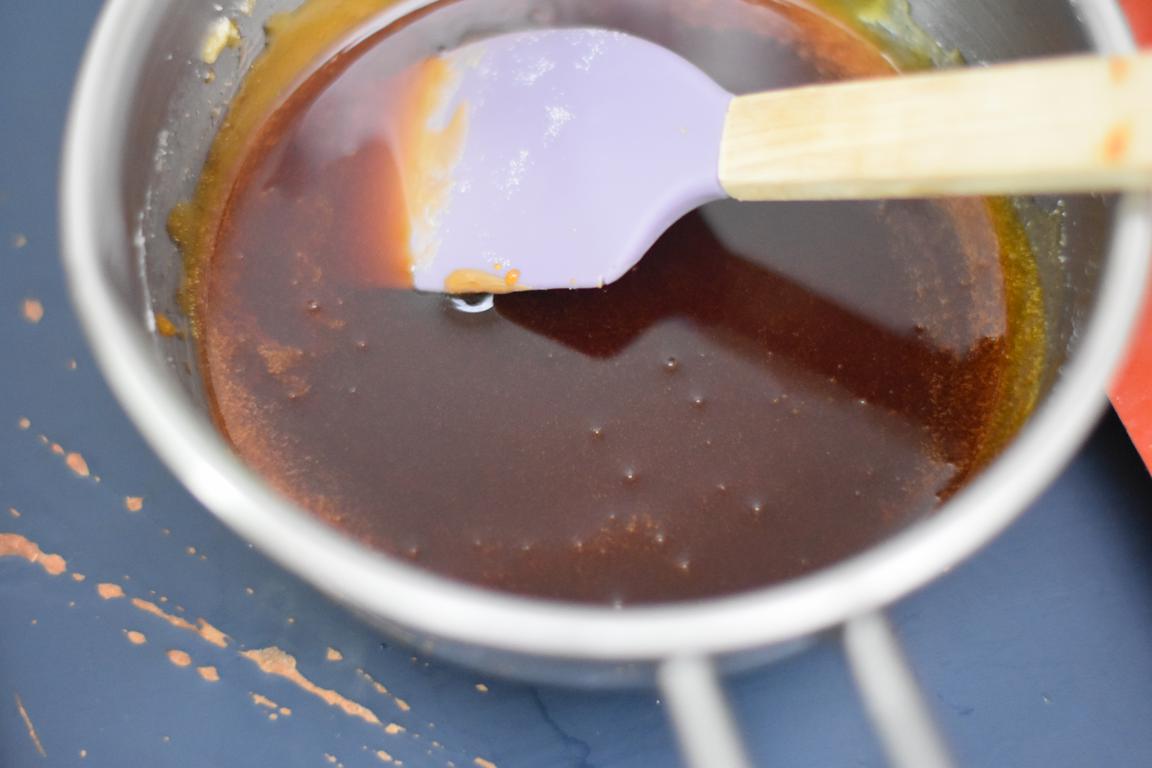
Remove the saucepan from the heat, then soak the choux in it and place them in the half-spheres or upside down on the baking paper.
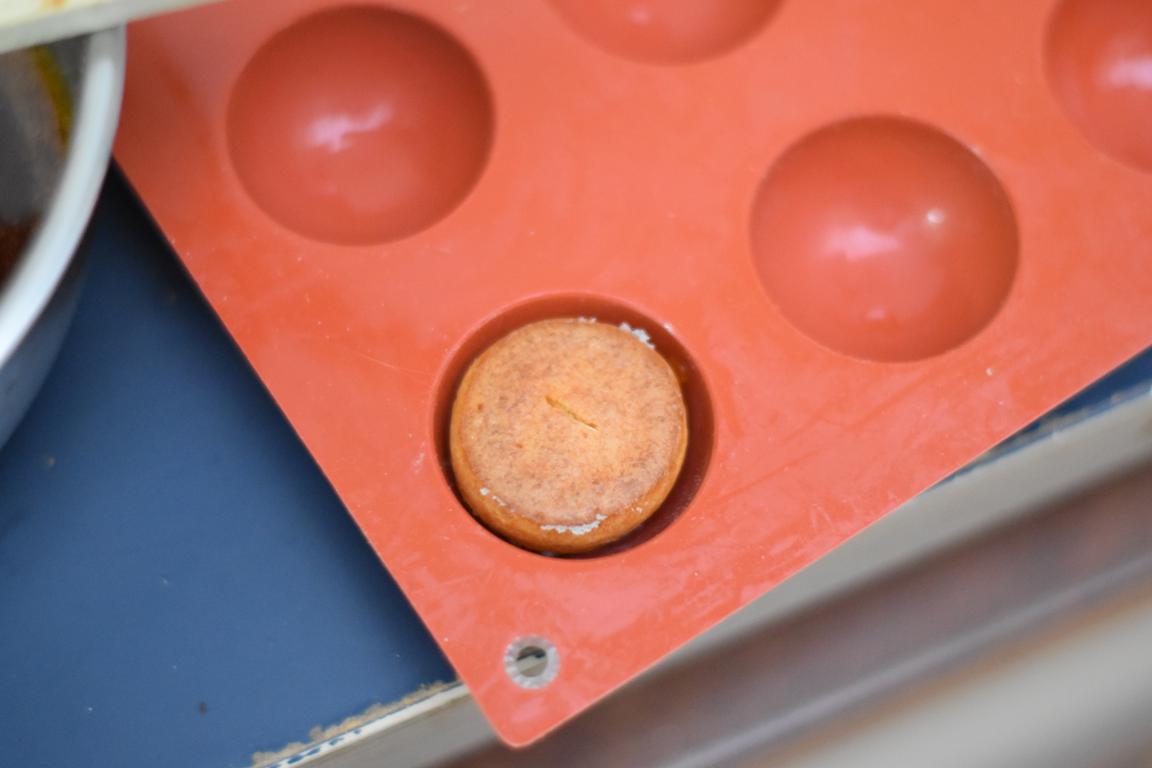
Let the caramel harden before turning them over.

Once the caramel has cooled, pierce a small hole under each choux and fill them with the cream using a piping bag.
Lemon whipped cream :
300g liquid cream
30g powdered sugar
Lemon zests (I did not put them in the cream, I used them as decoration once the Saint-Honoré finished)
Whip the cream with the powdered sugar until you obtain a whipped cream, then put it in a piping bag fitted with a saint-honoré tip (or the one of your choice).
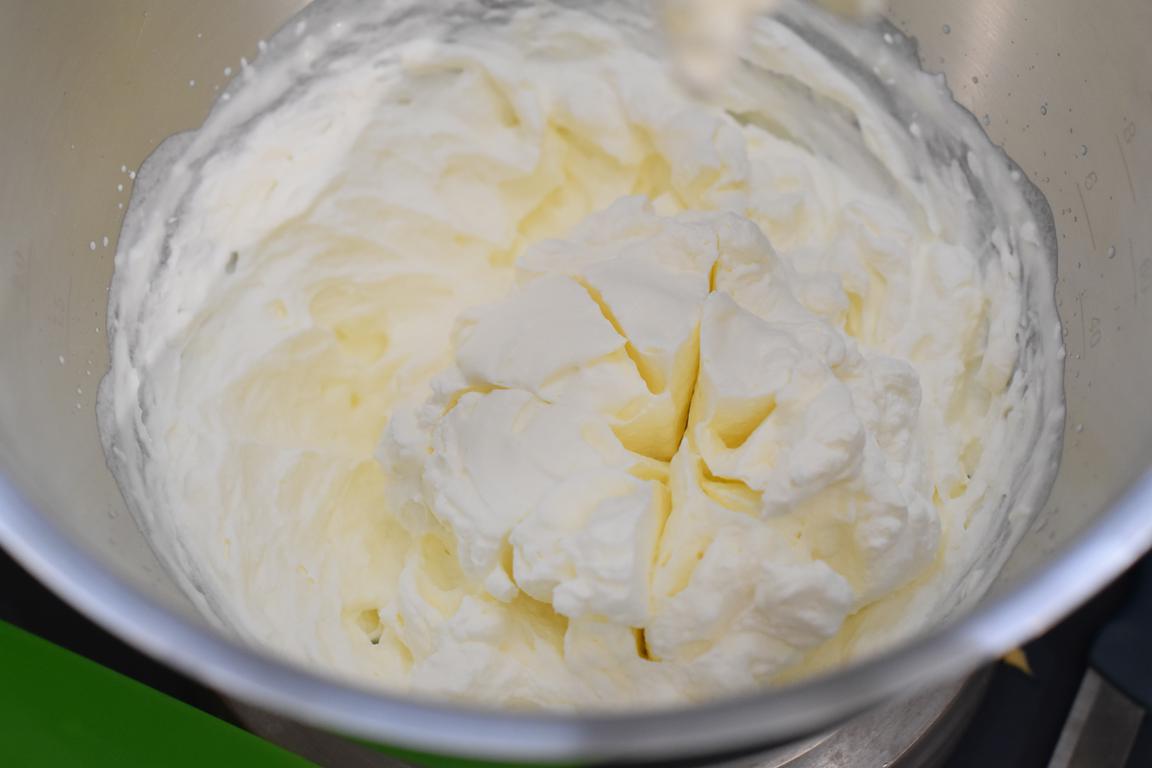
Assembly :
Almond praliné
Chopped almonds & lemon zests
Glue the choux all around the puff pastry with a little custard or caramel if it is still warm.
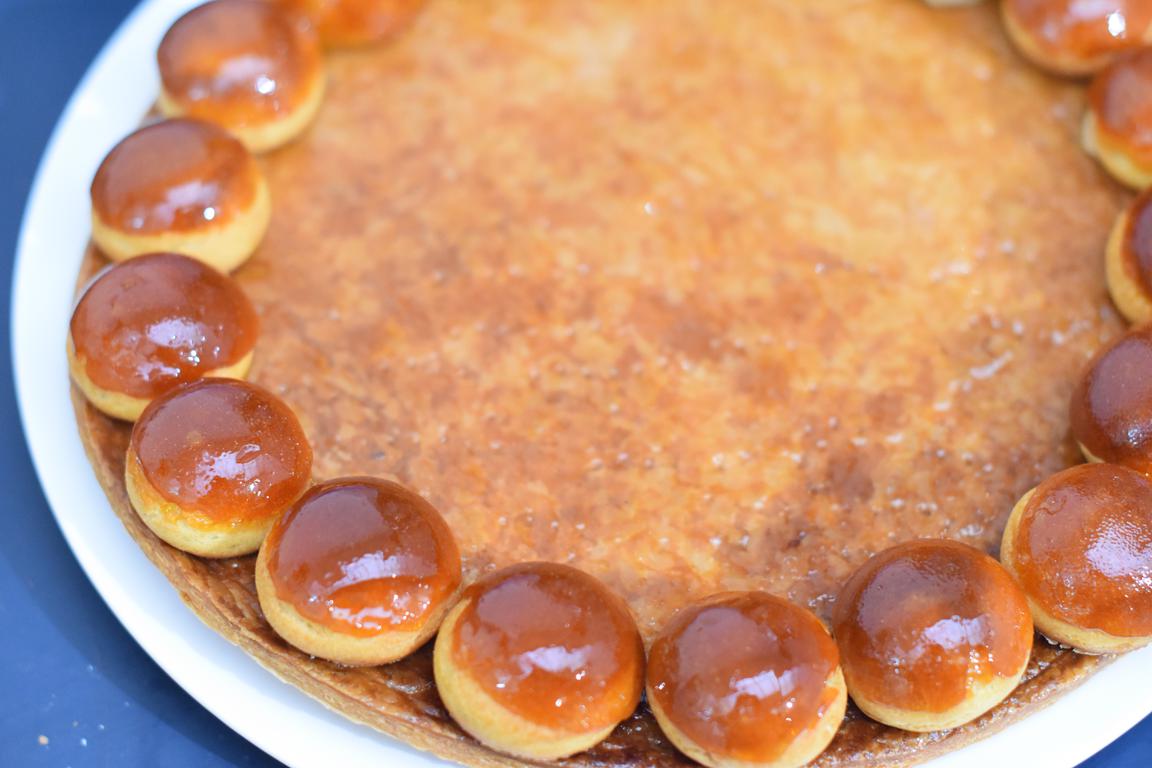
Garnish the puff pastry base with pastry cream.
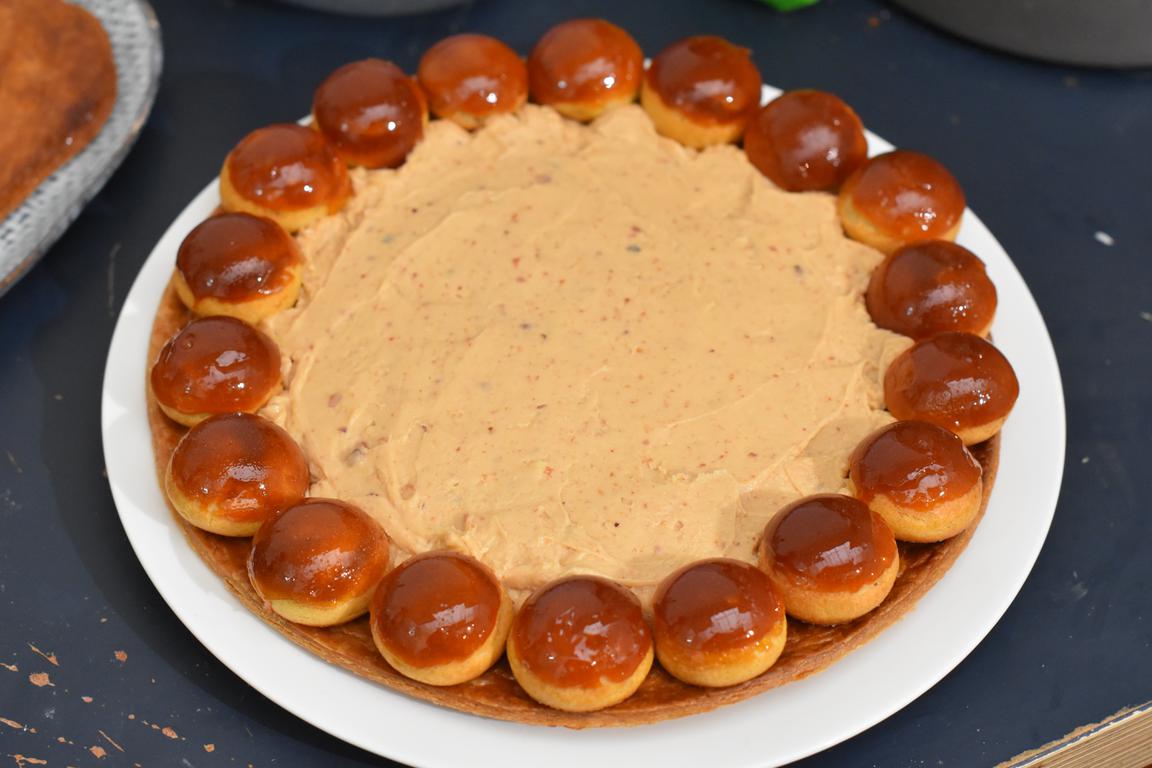
Then spread a little pure almond praline, then pipe the whipped cream and decorate with some choux, lemon zest and chopped almonds.
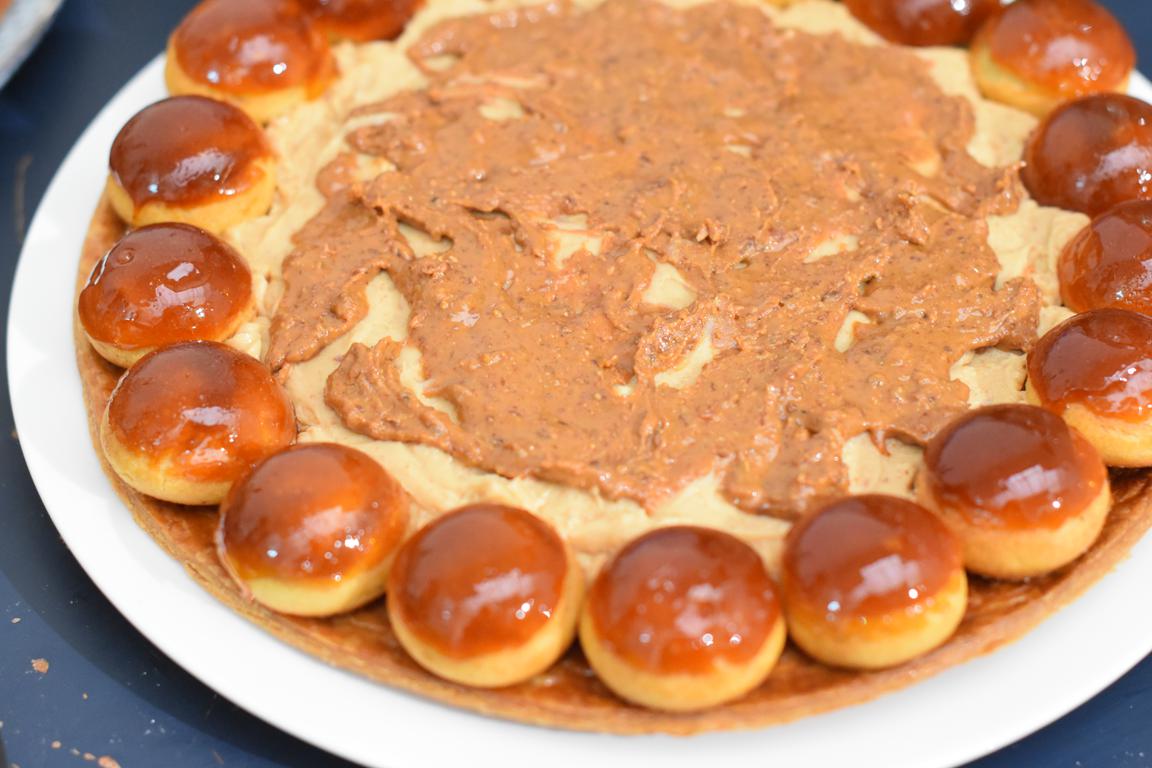
Finally, enjoy !
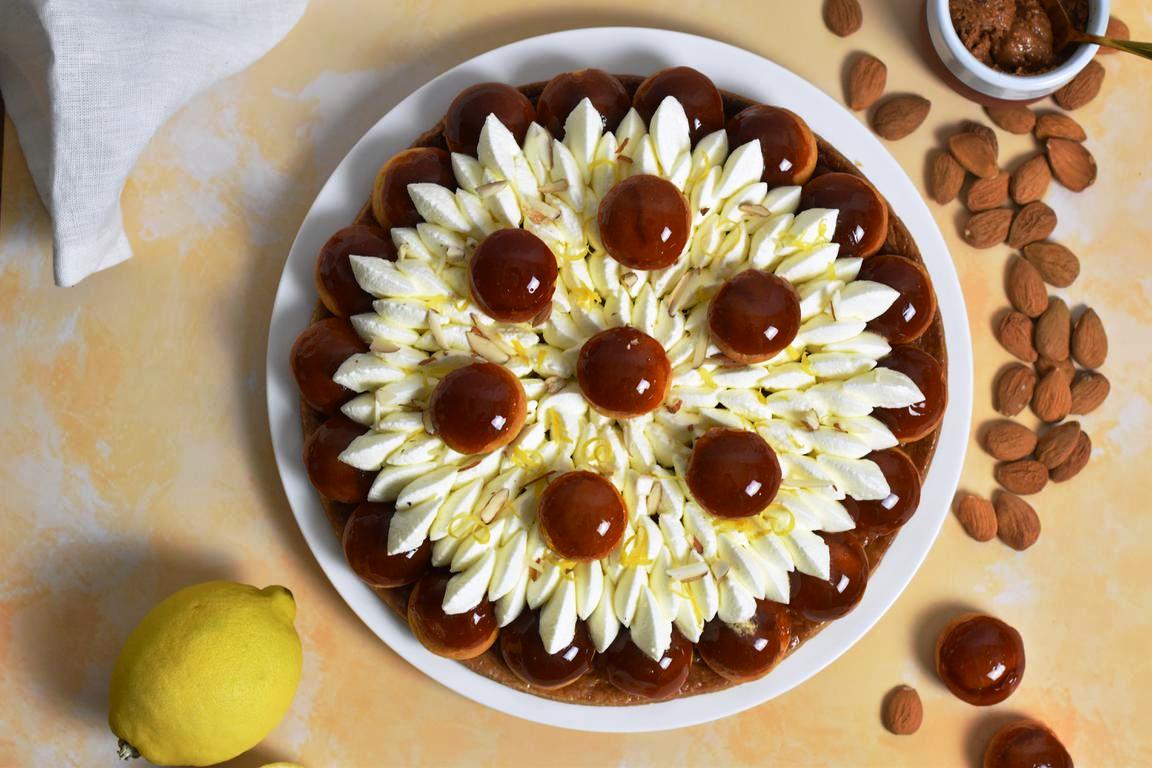
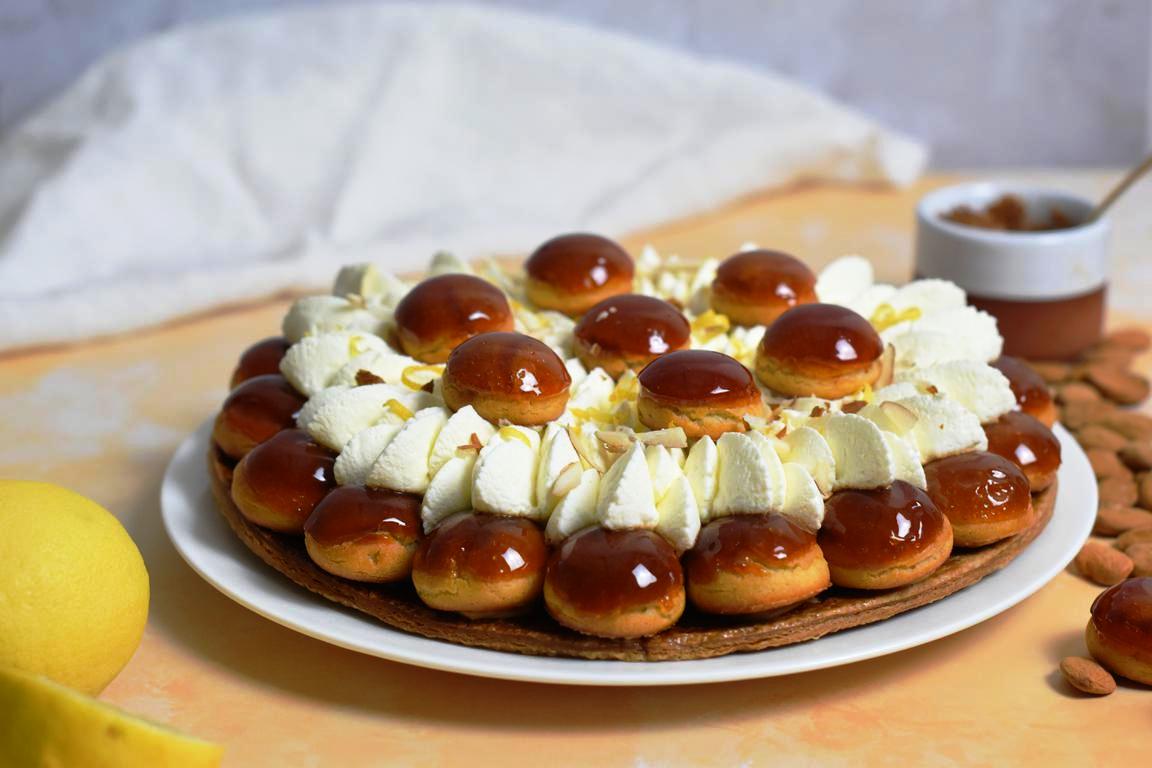
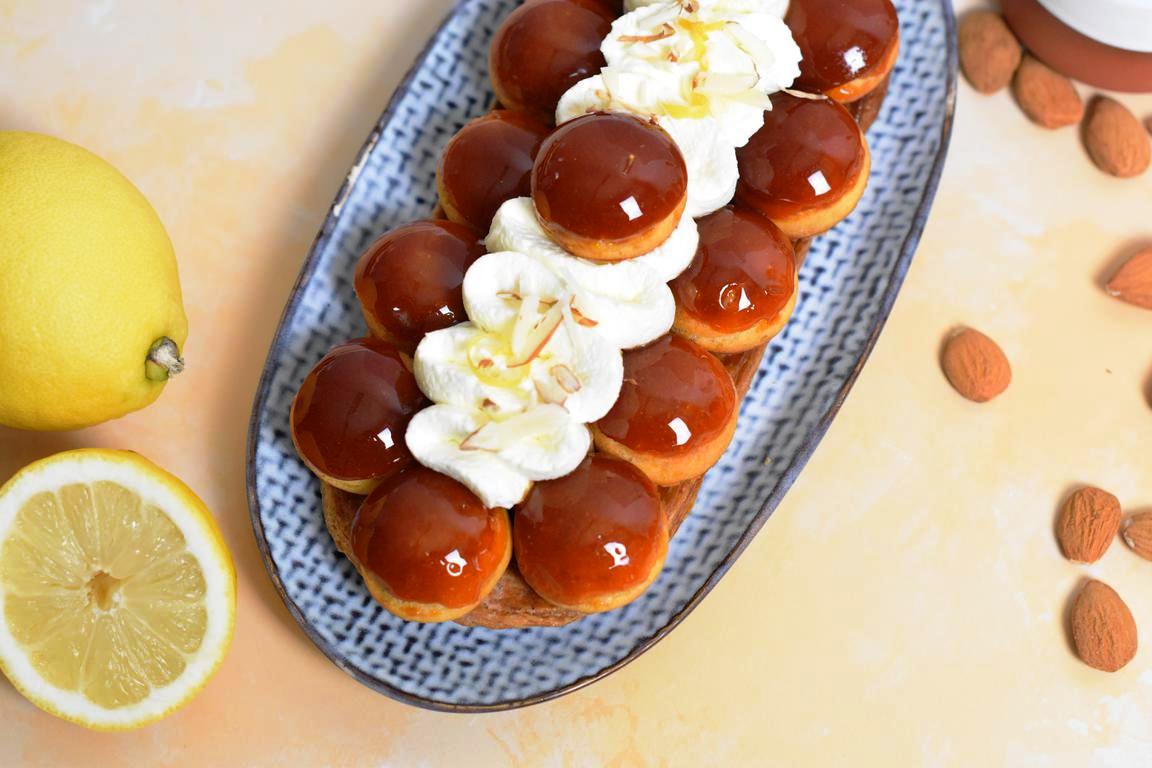
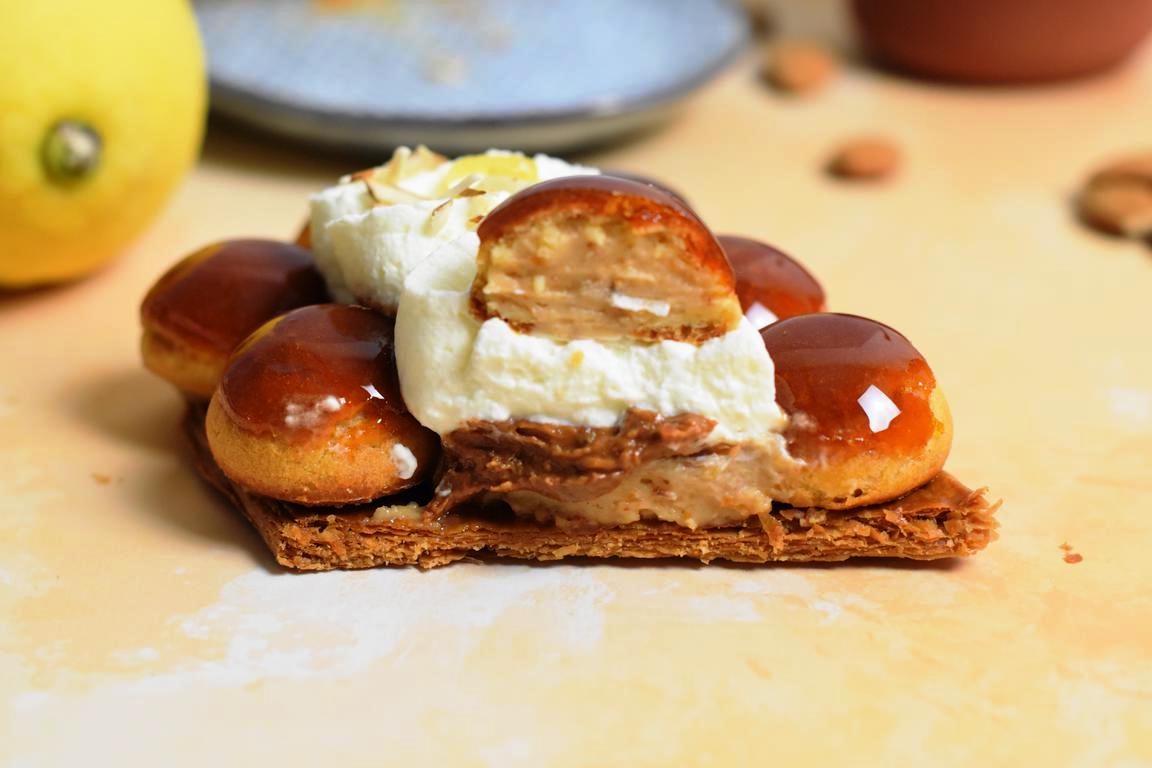
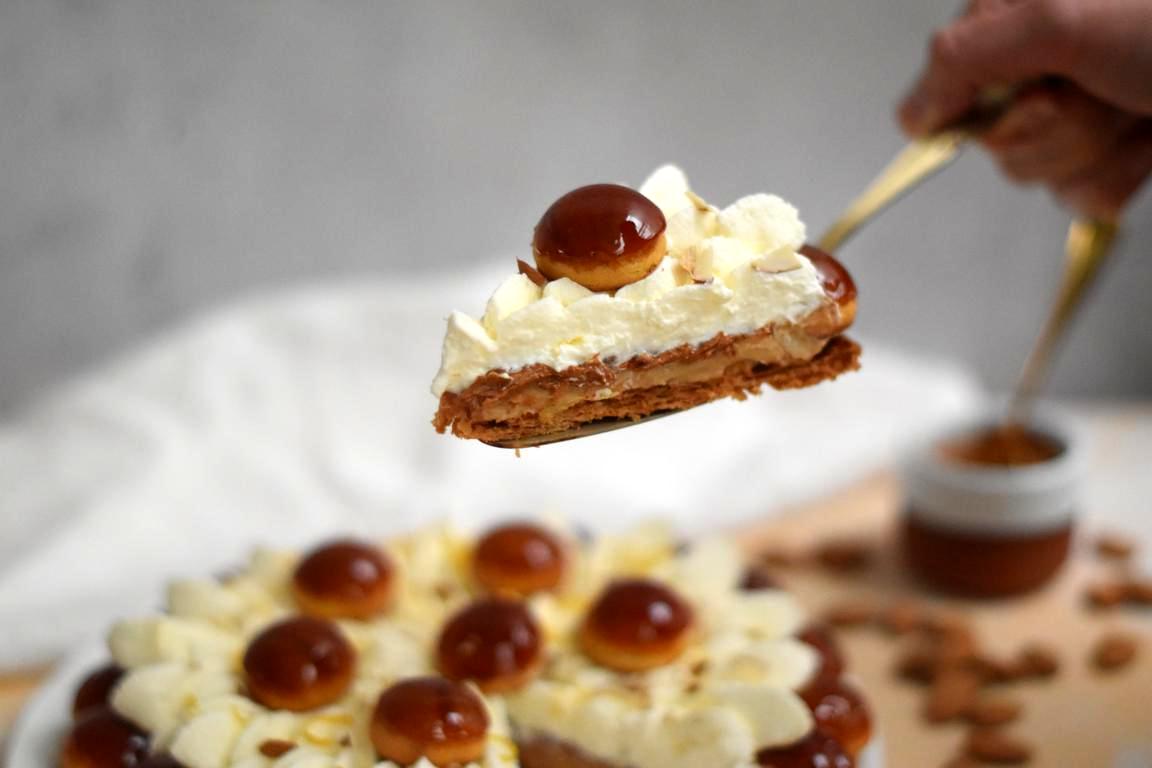
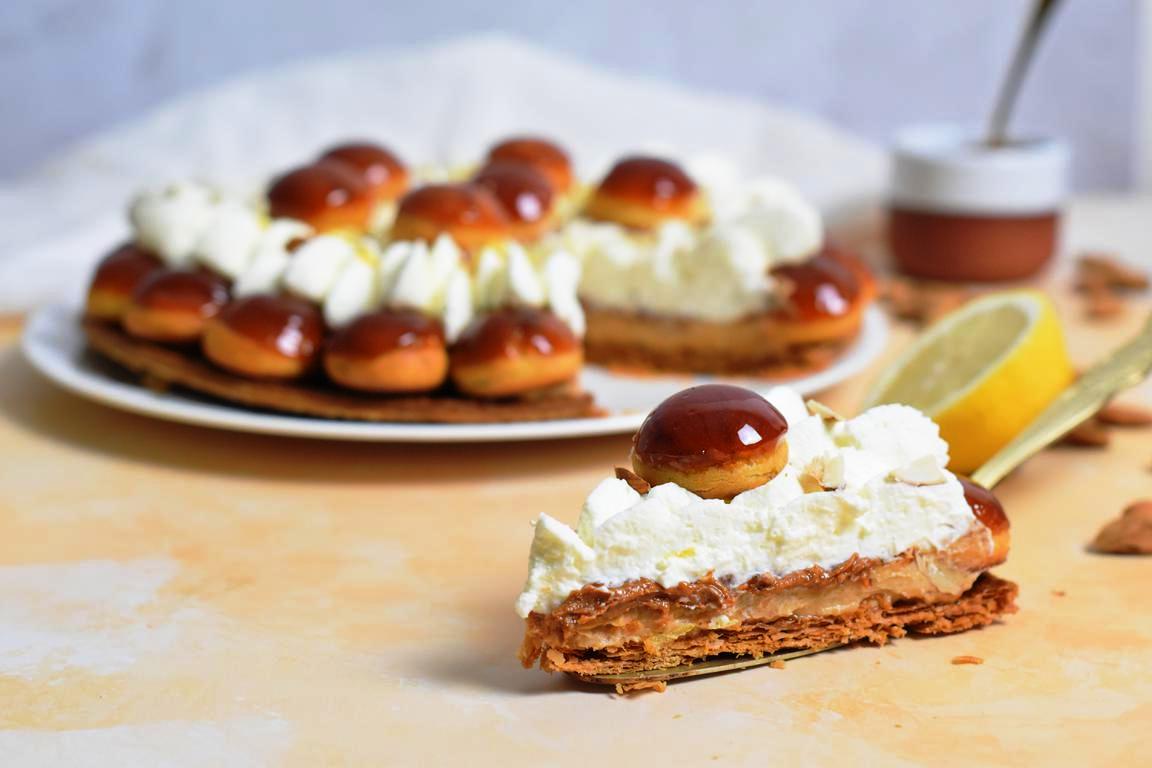
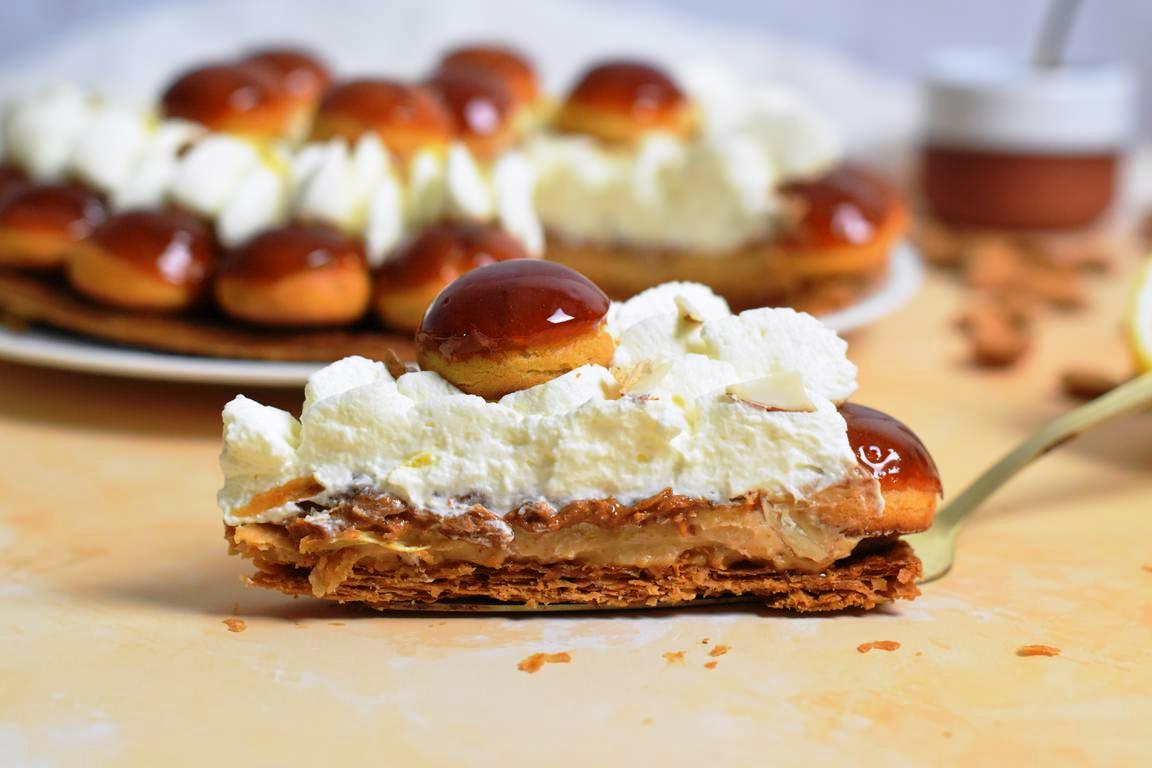
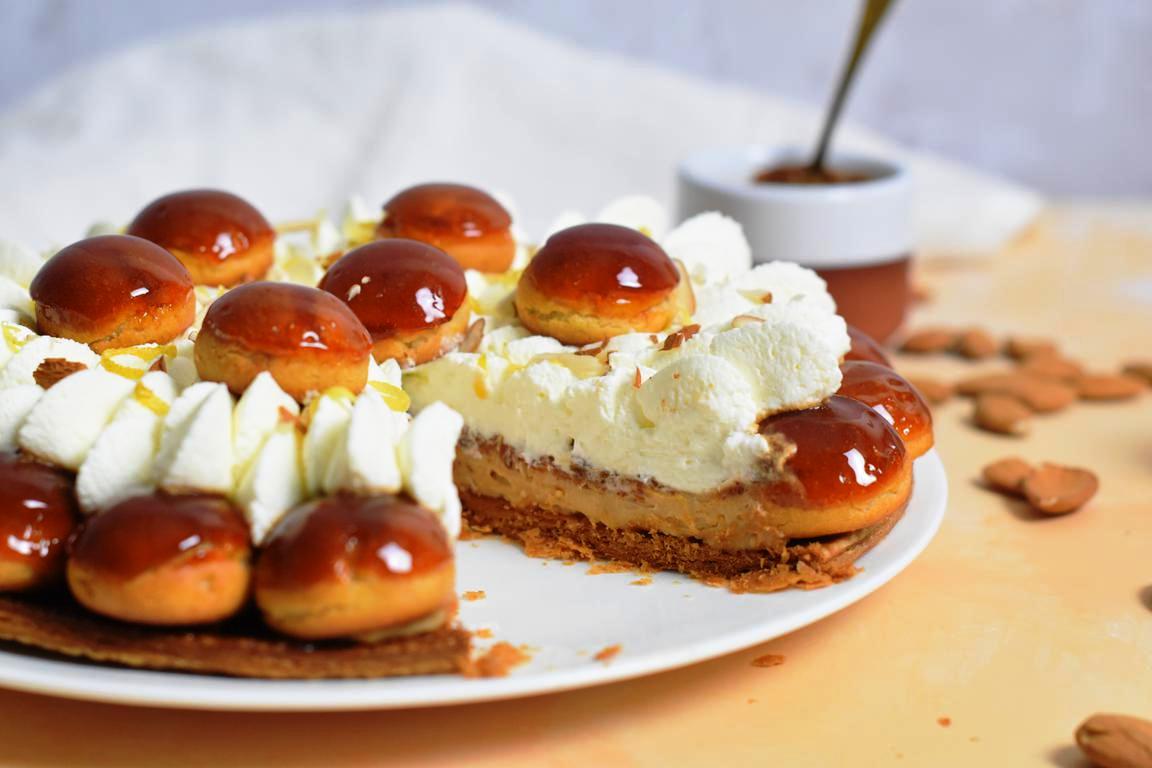
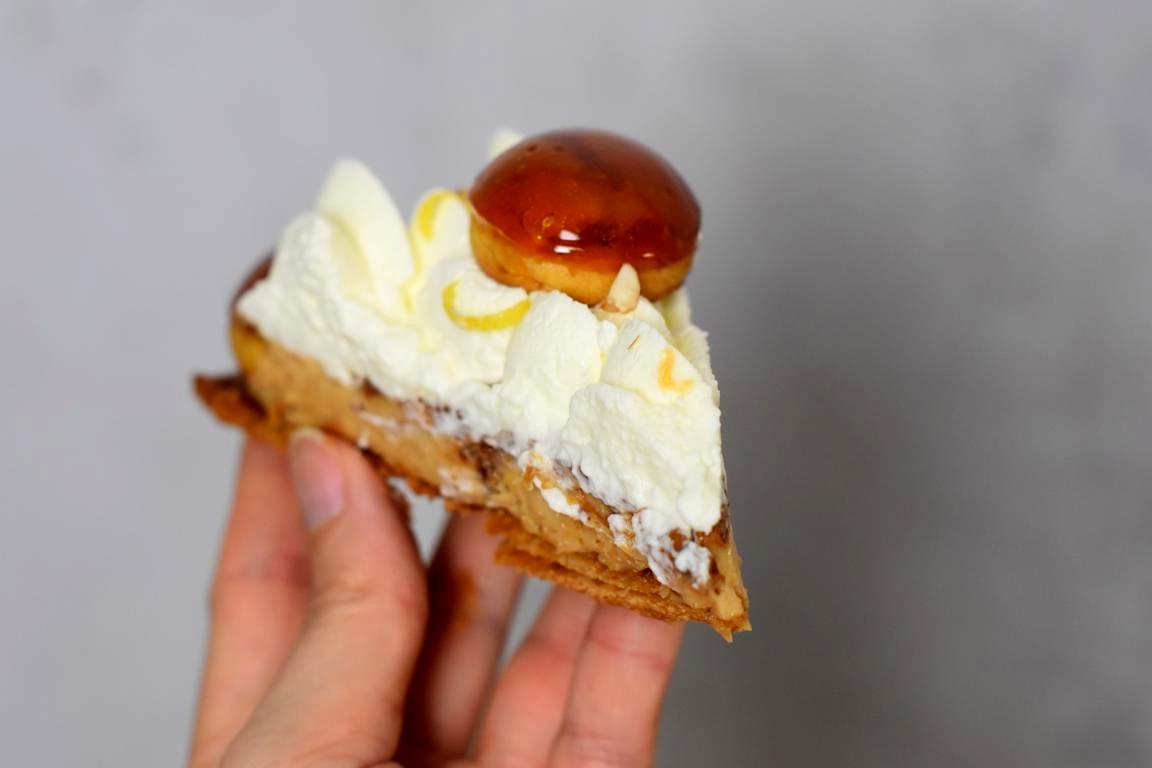
You may like
